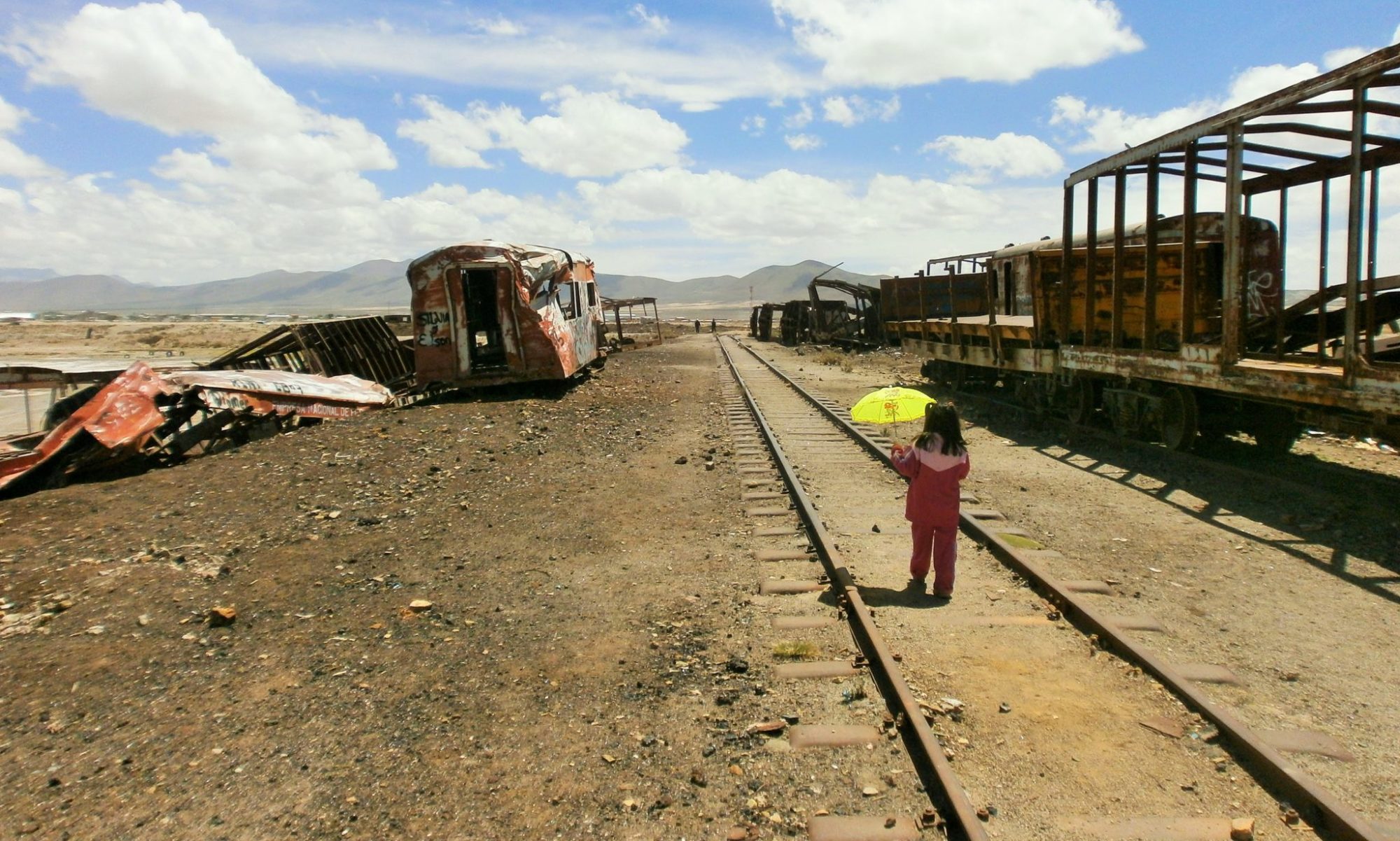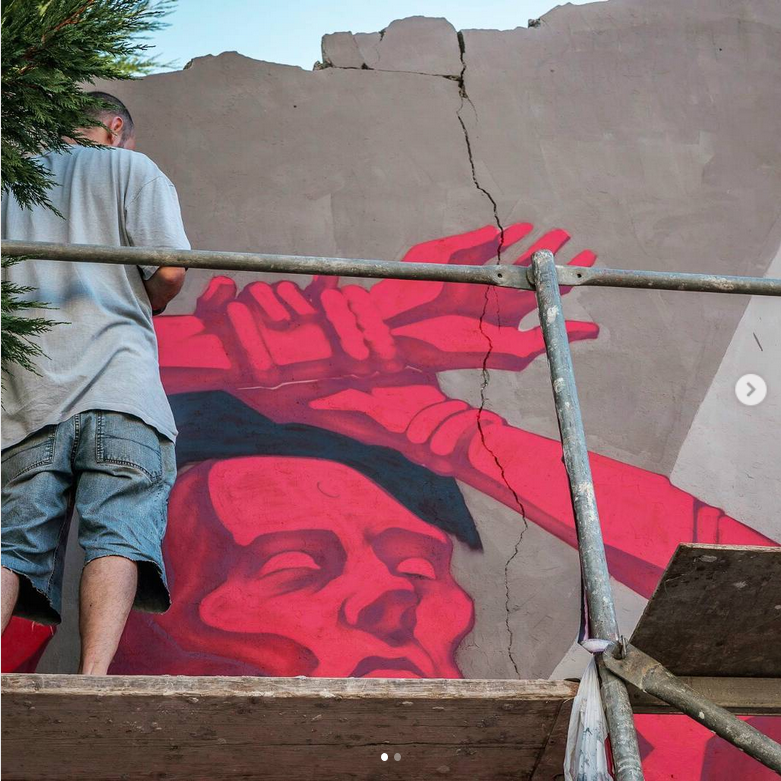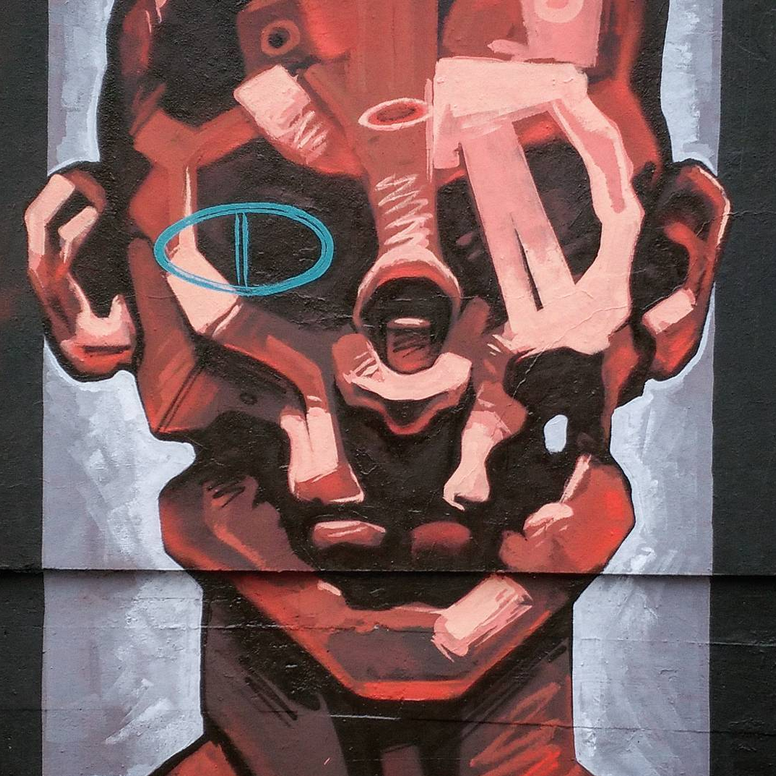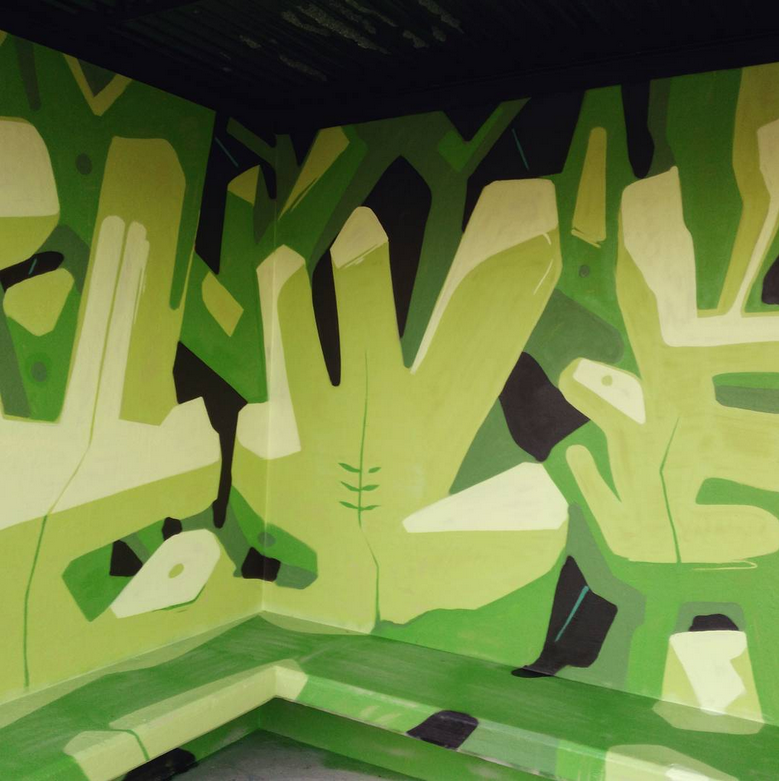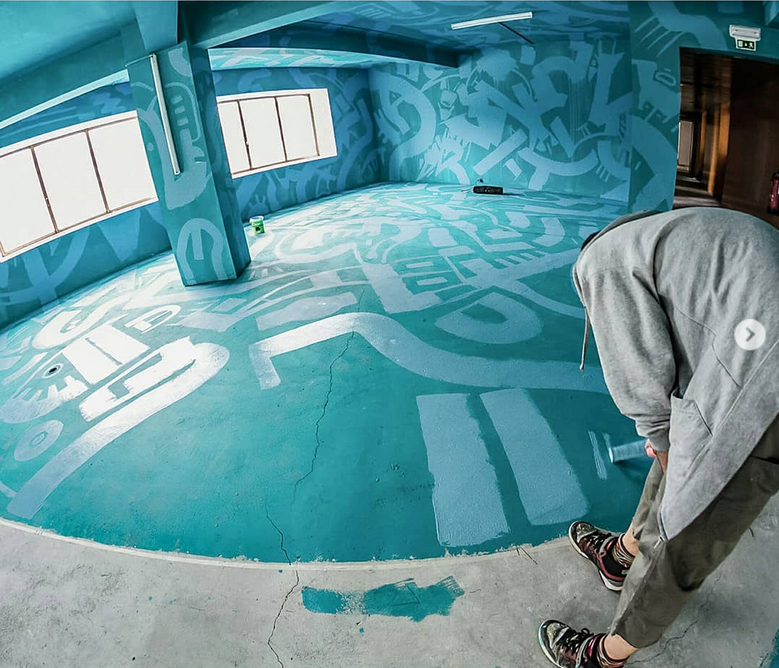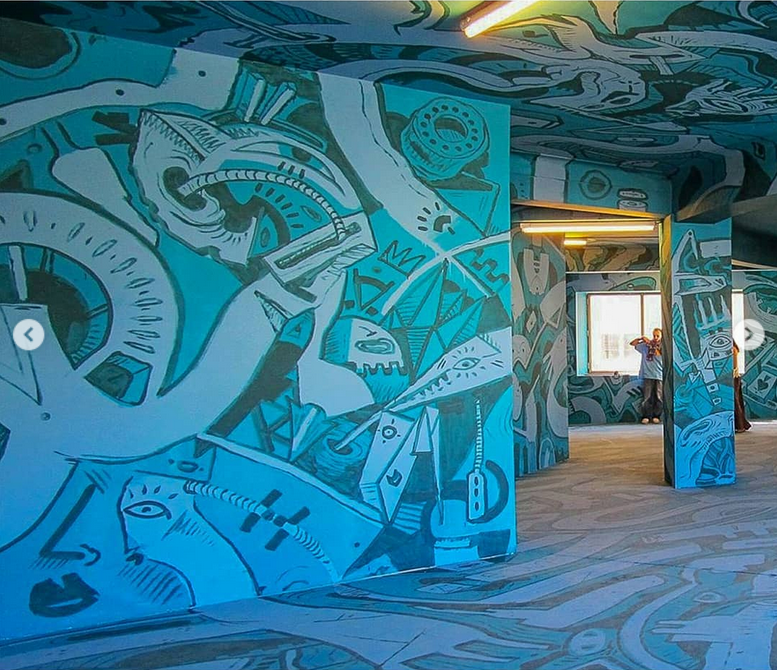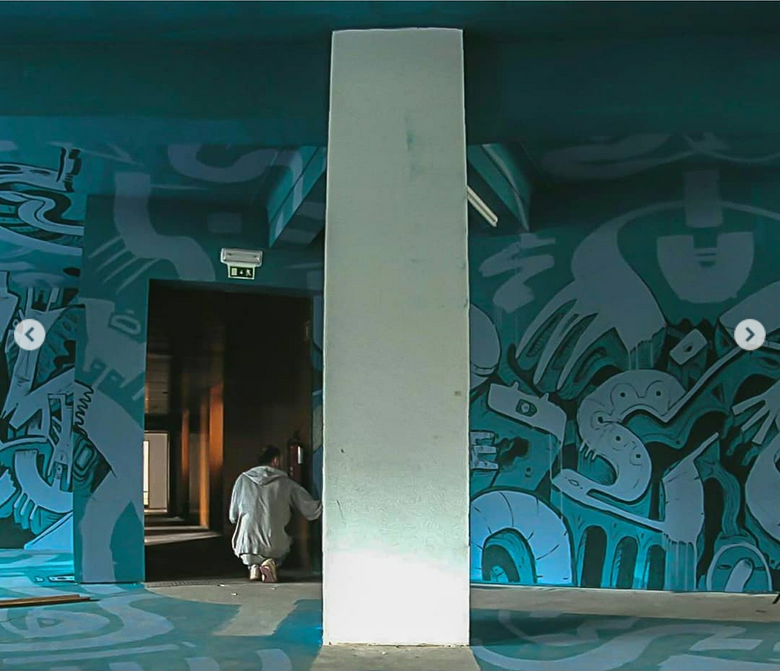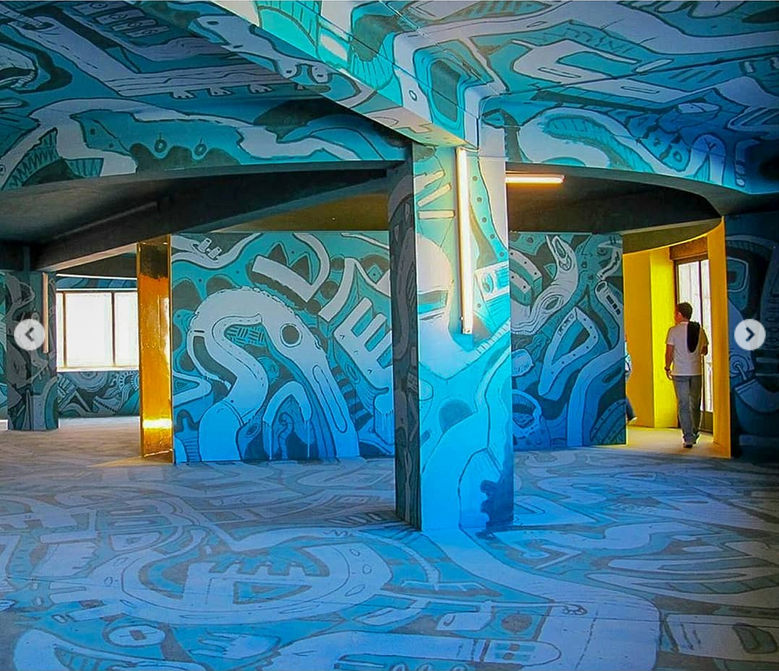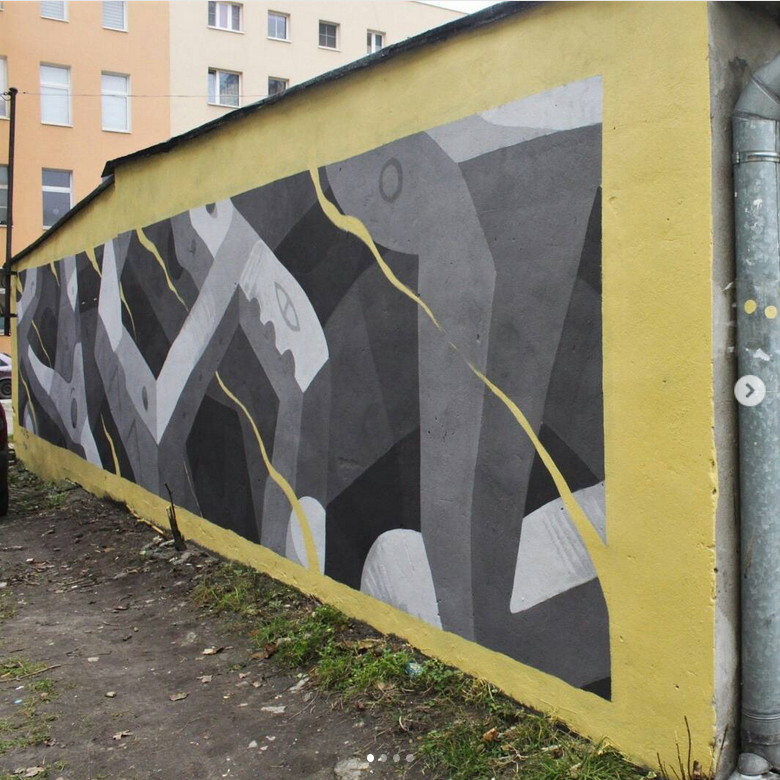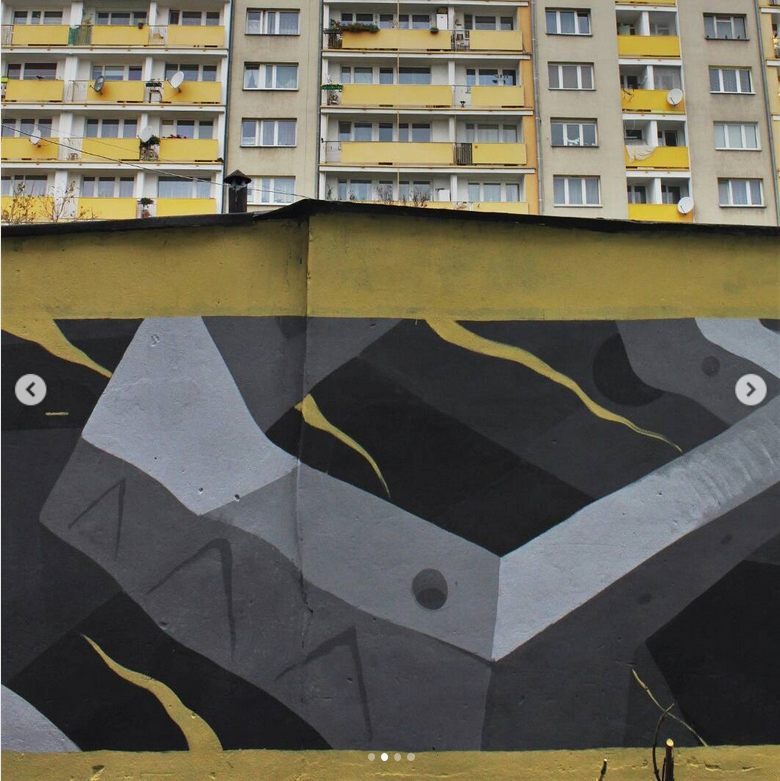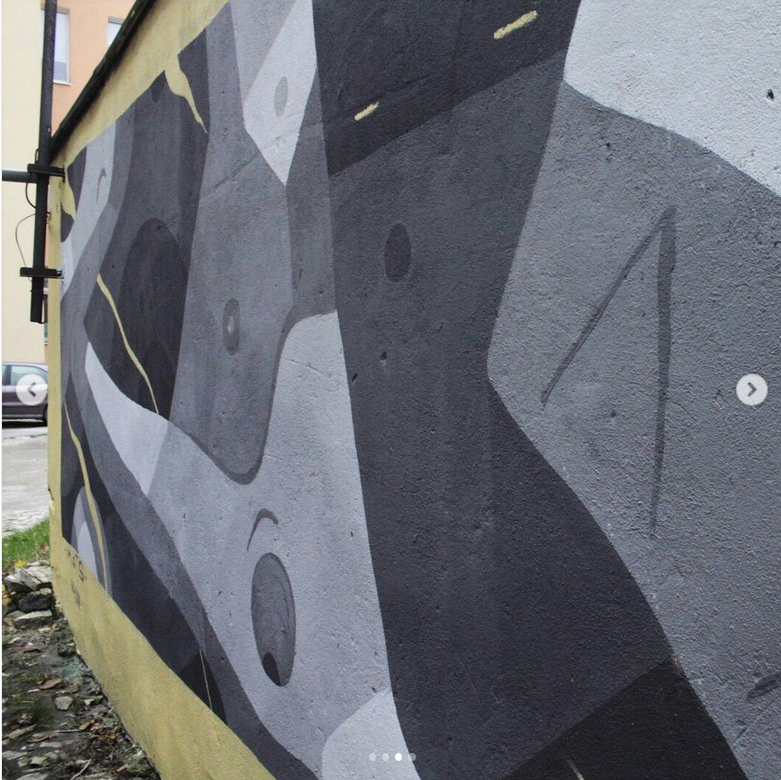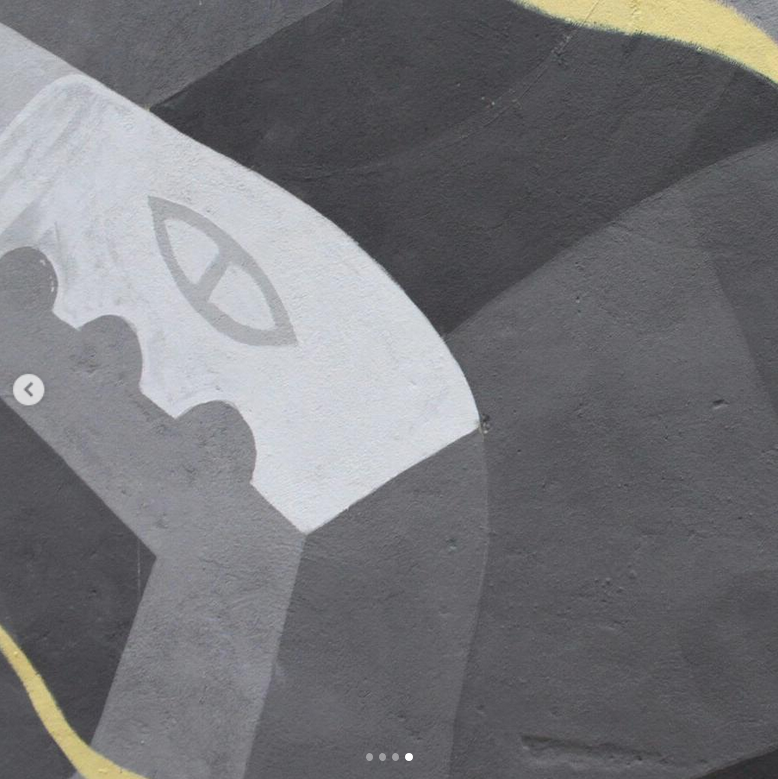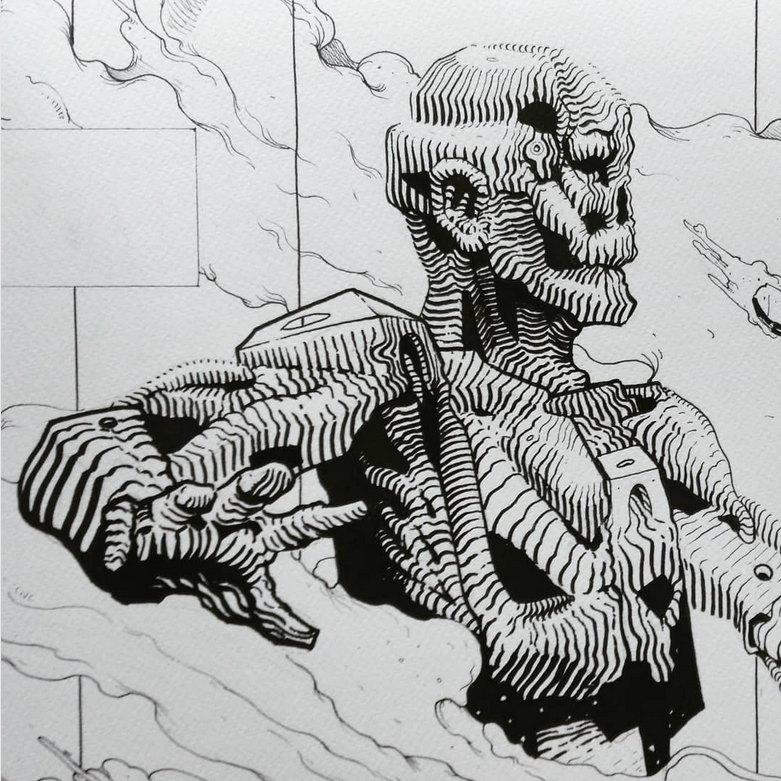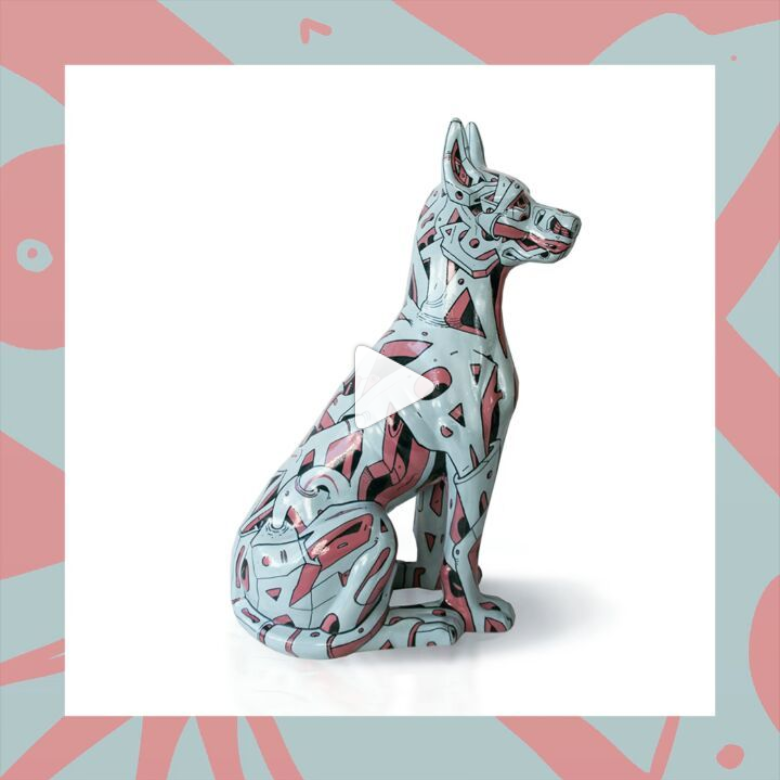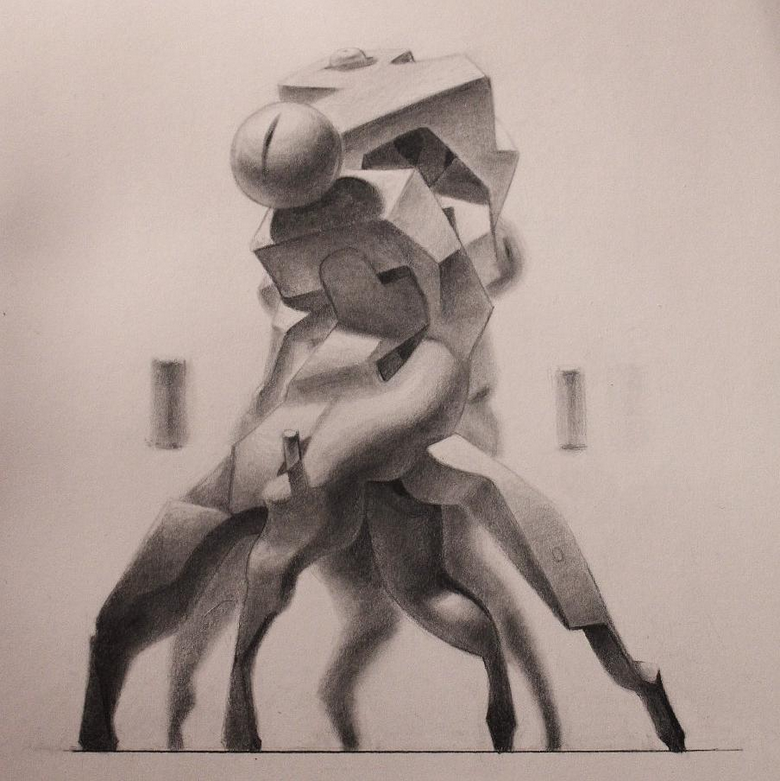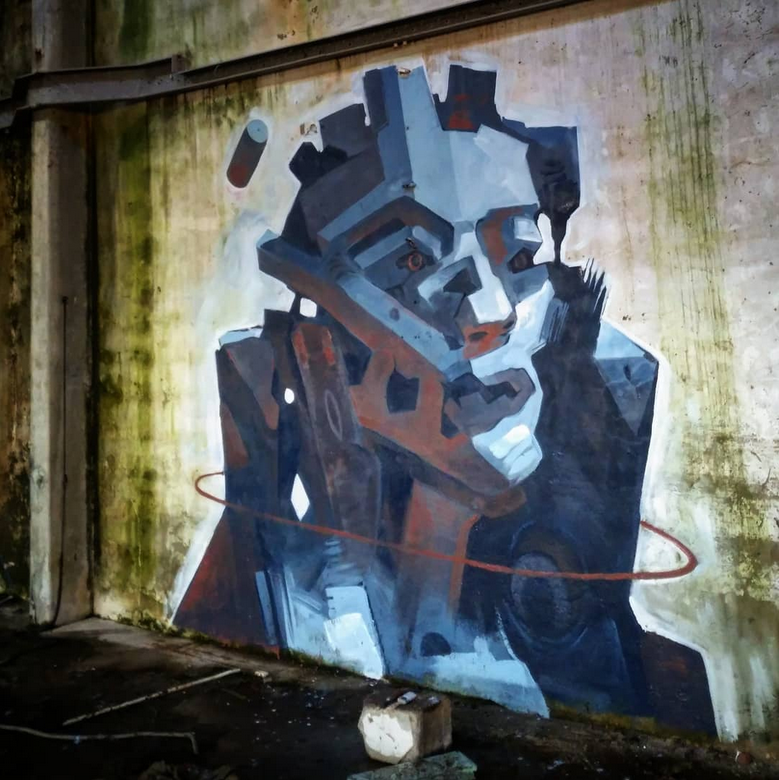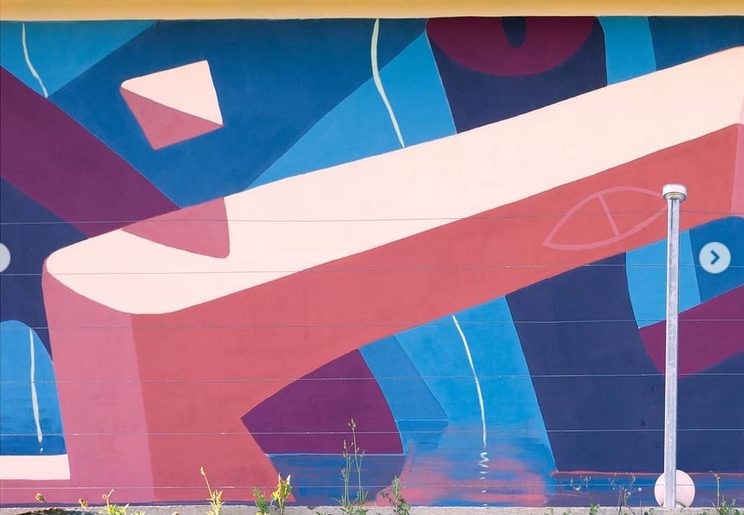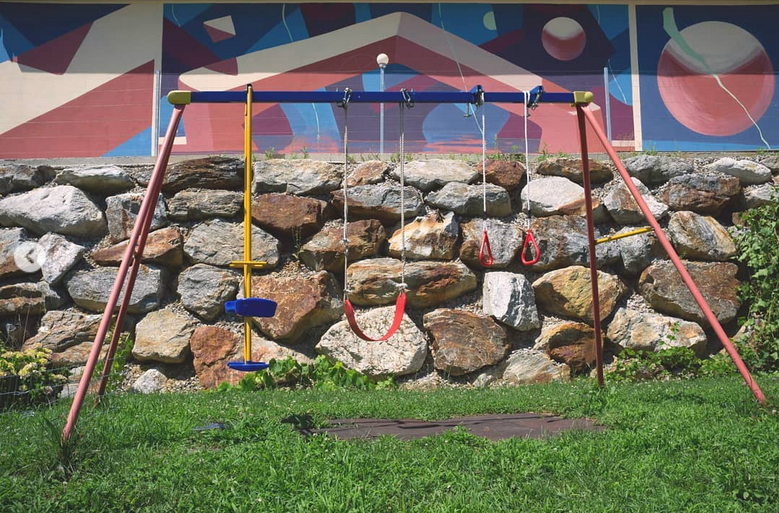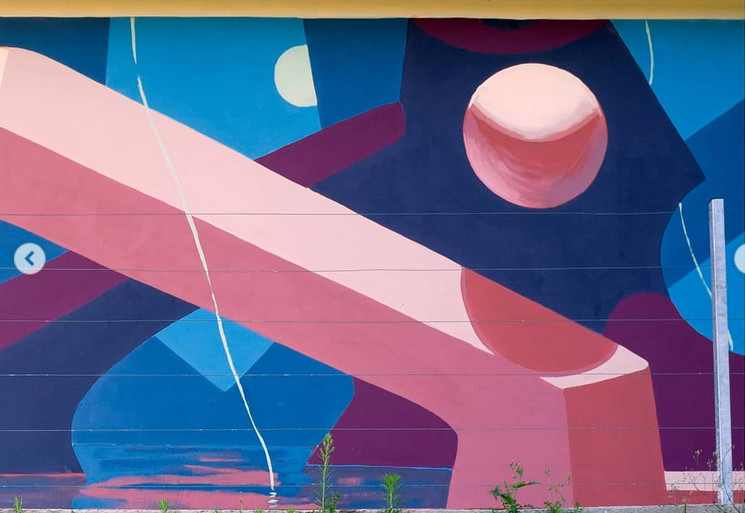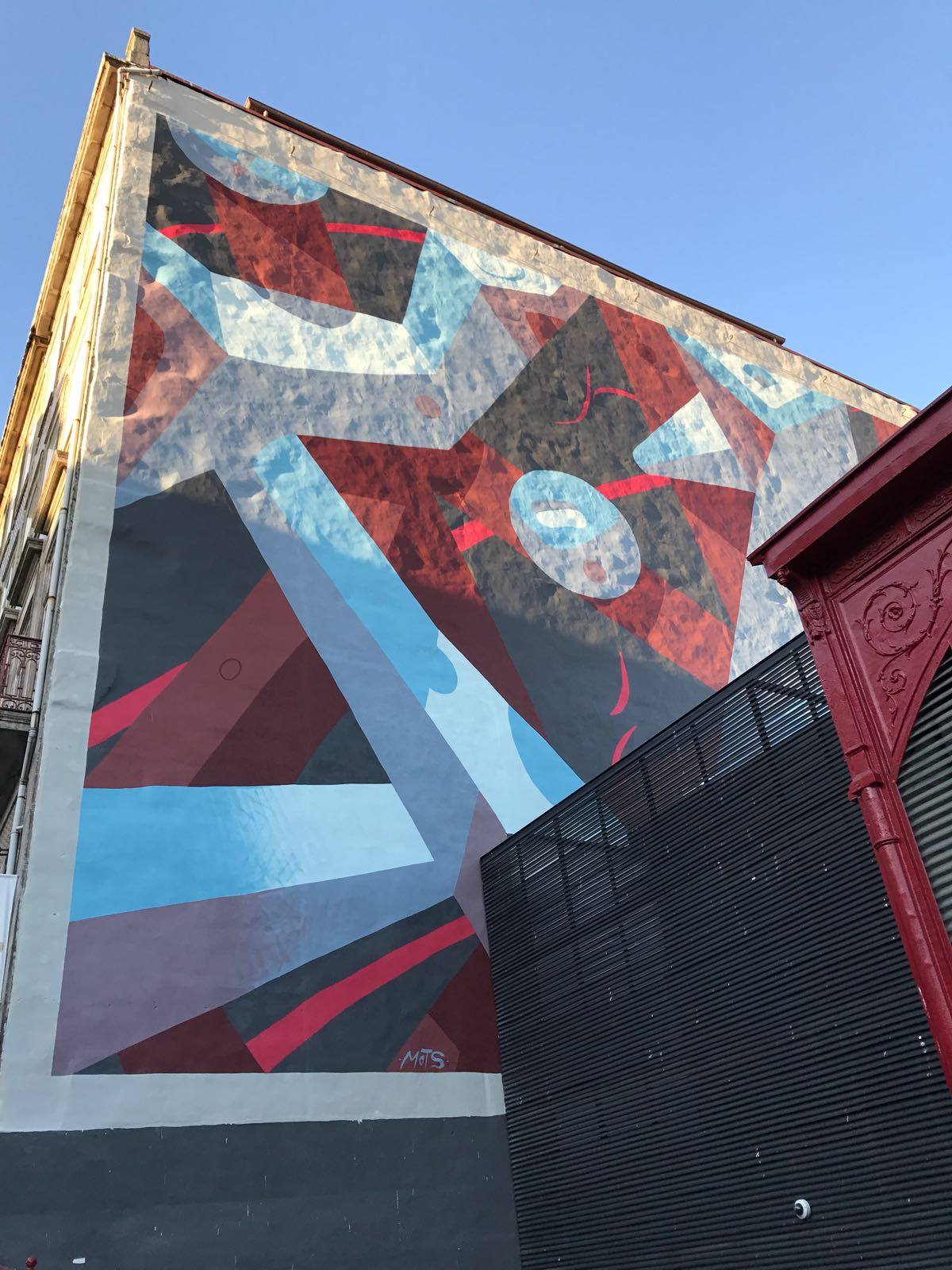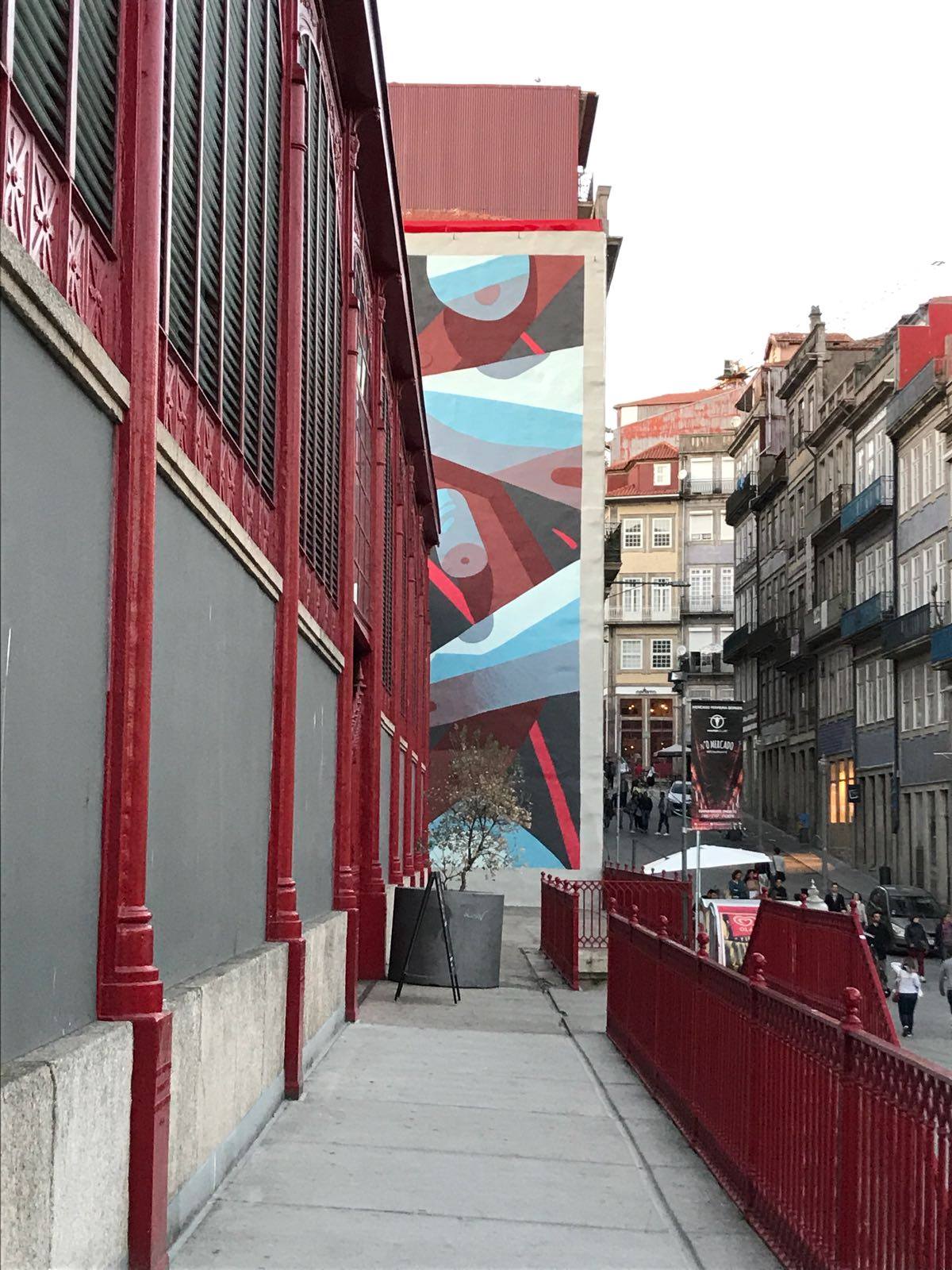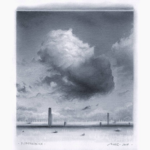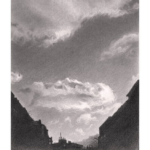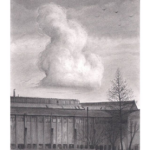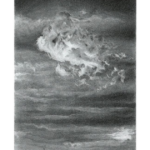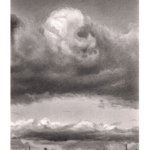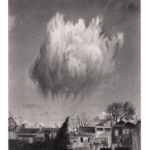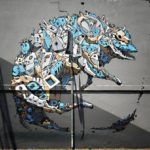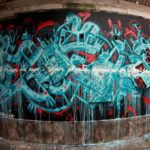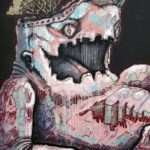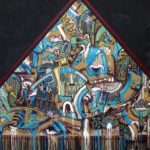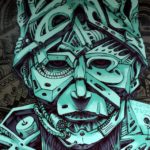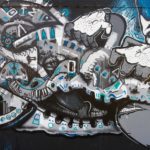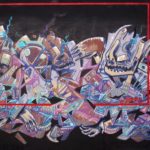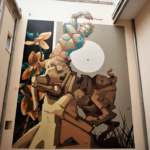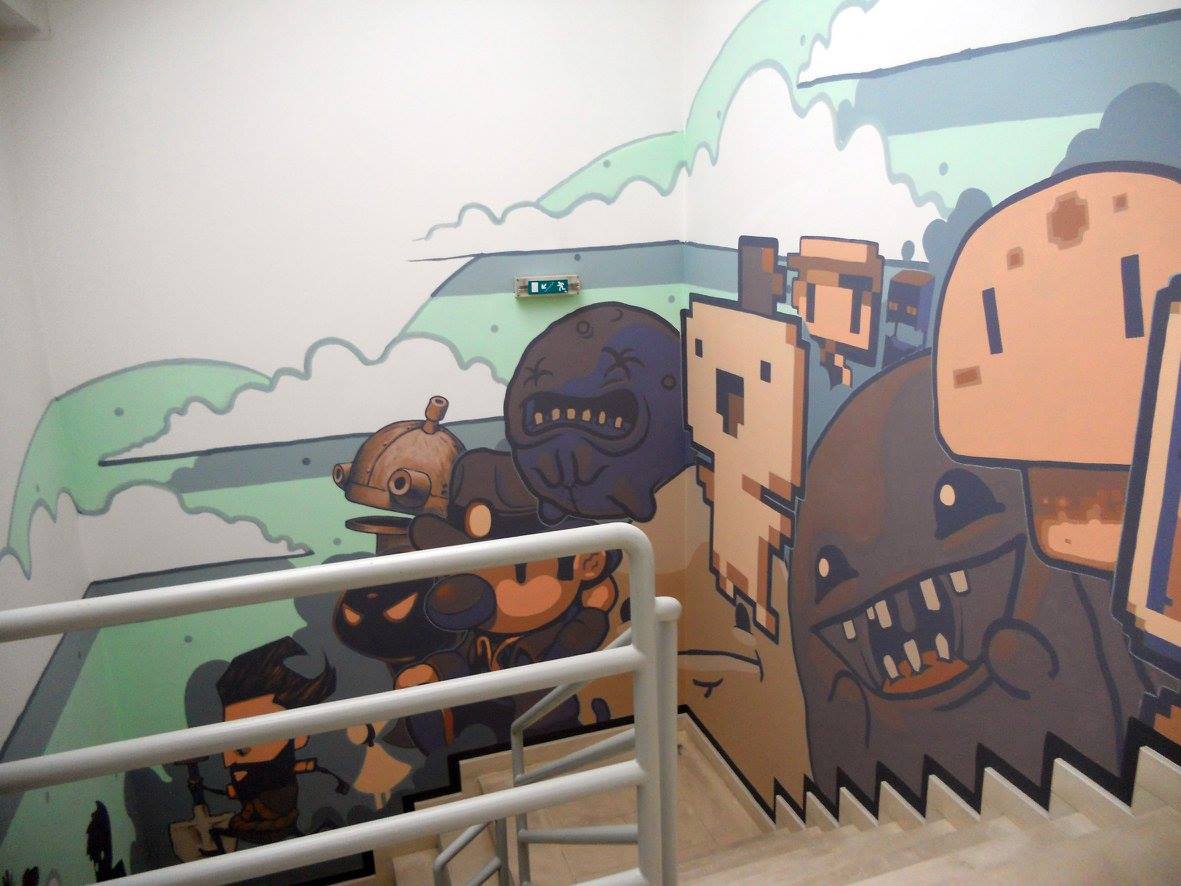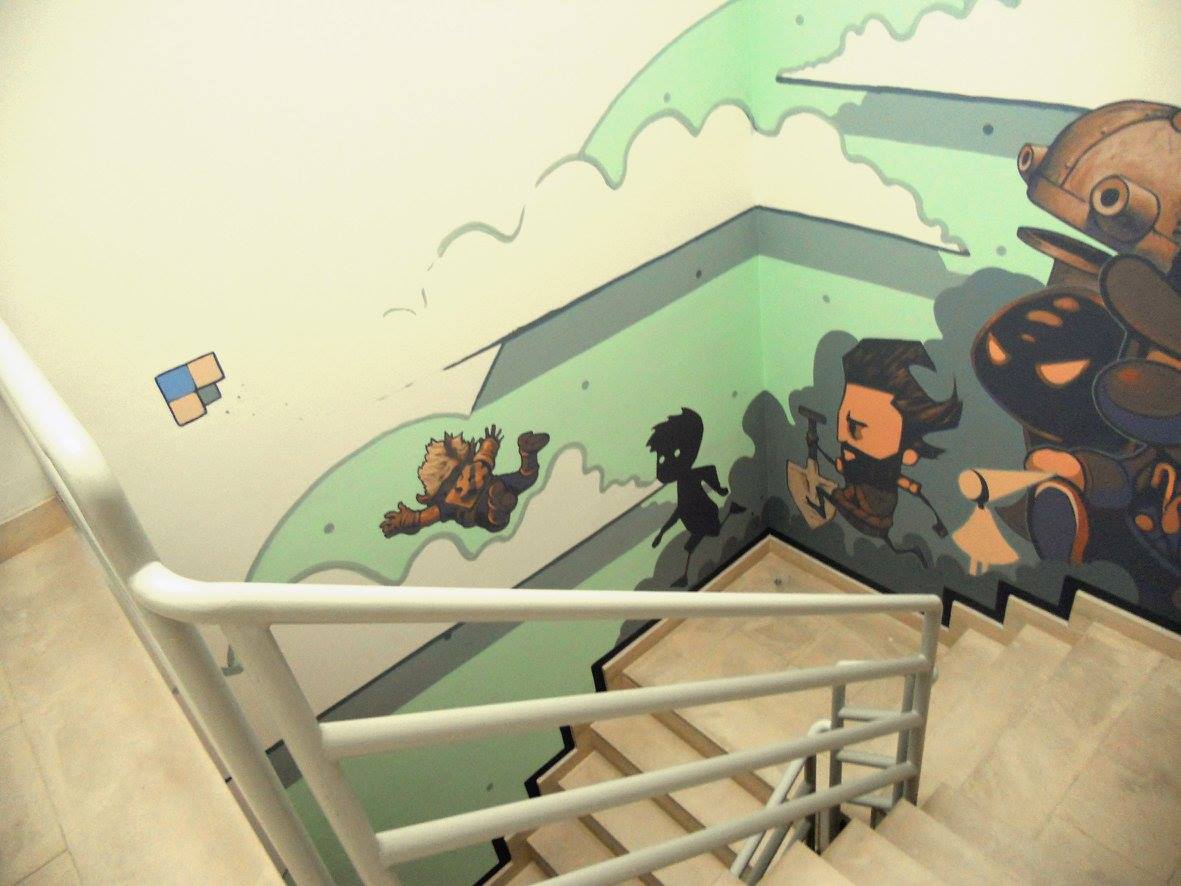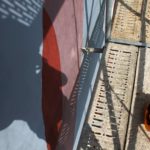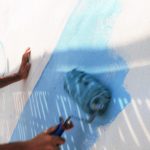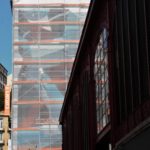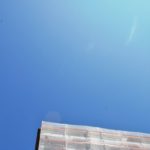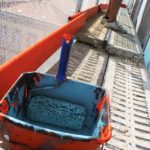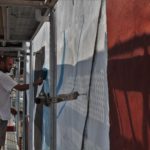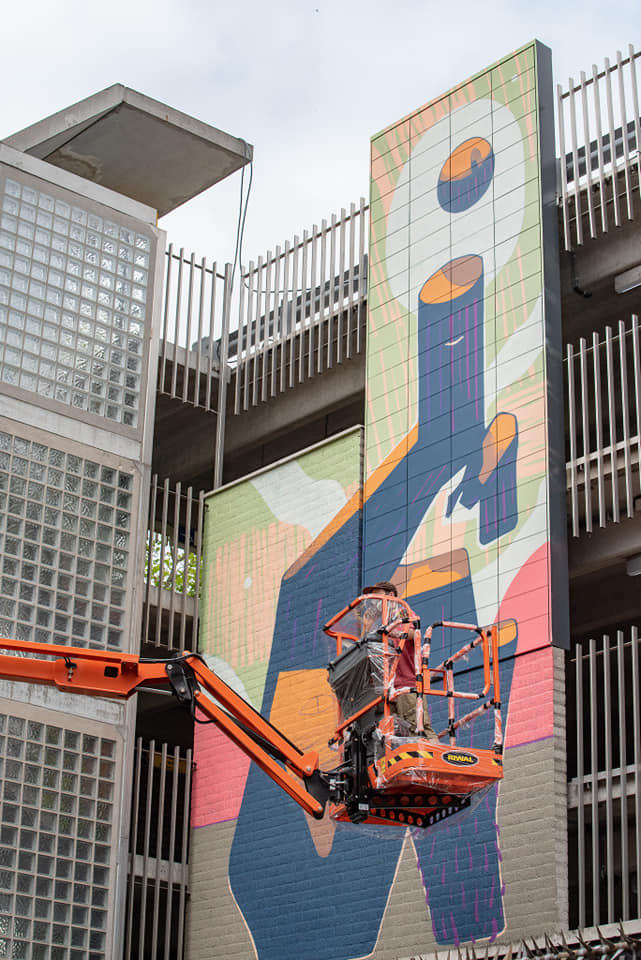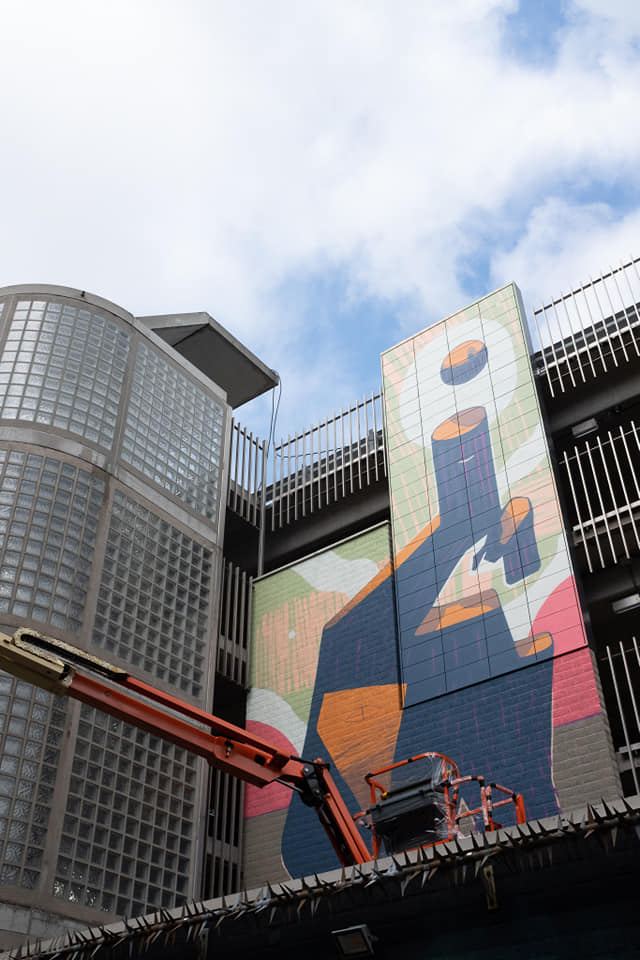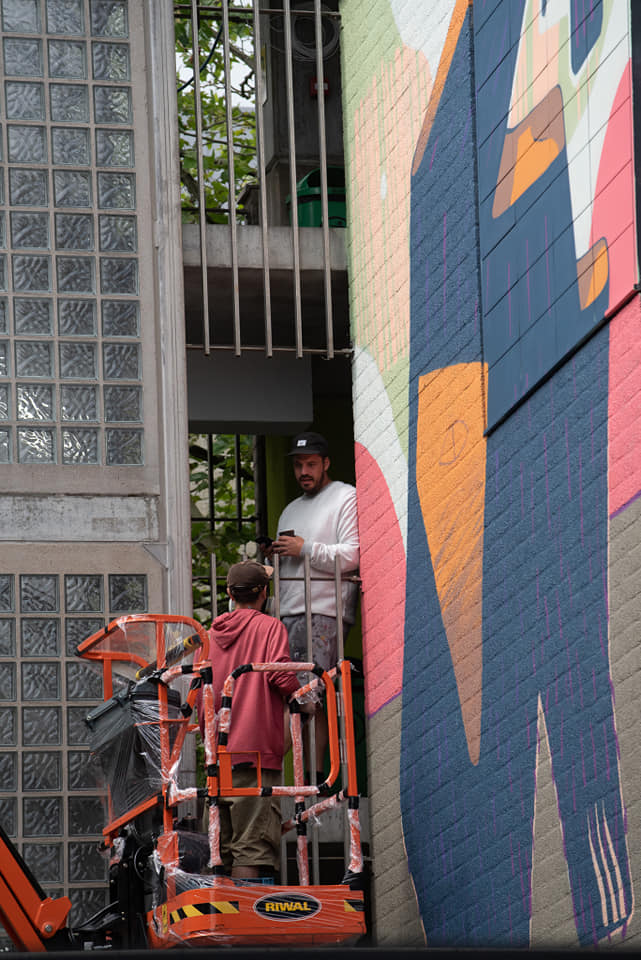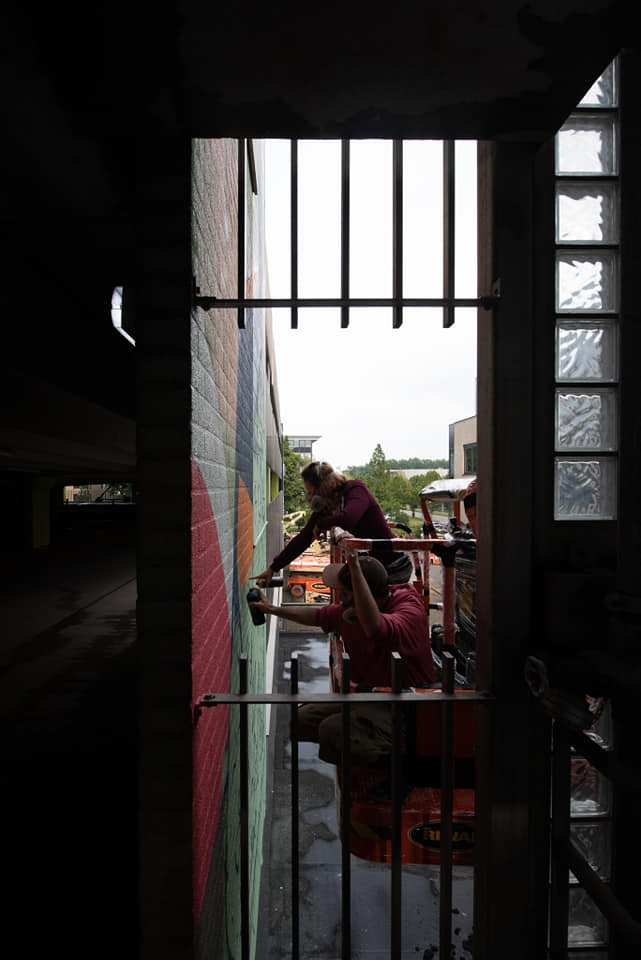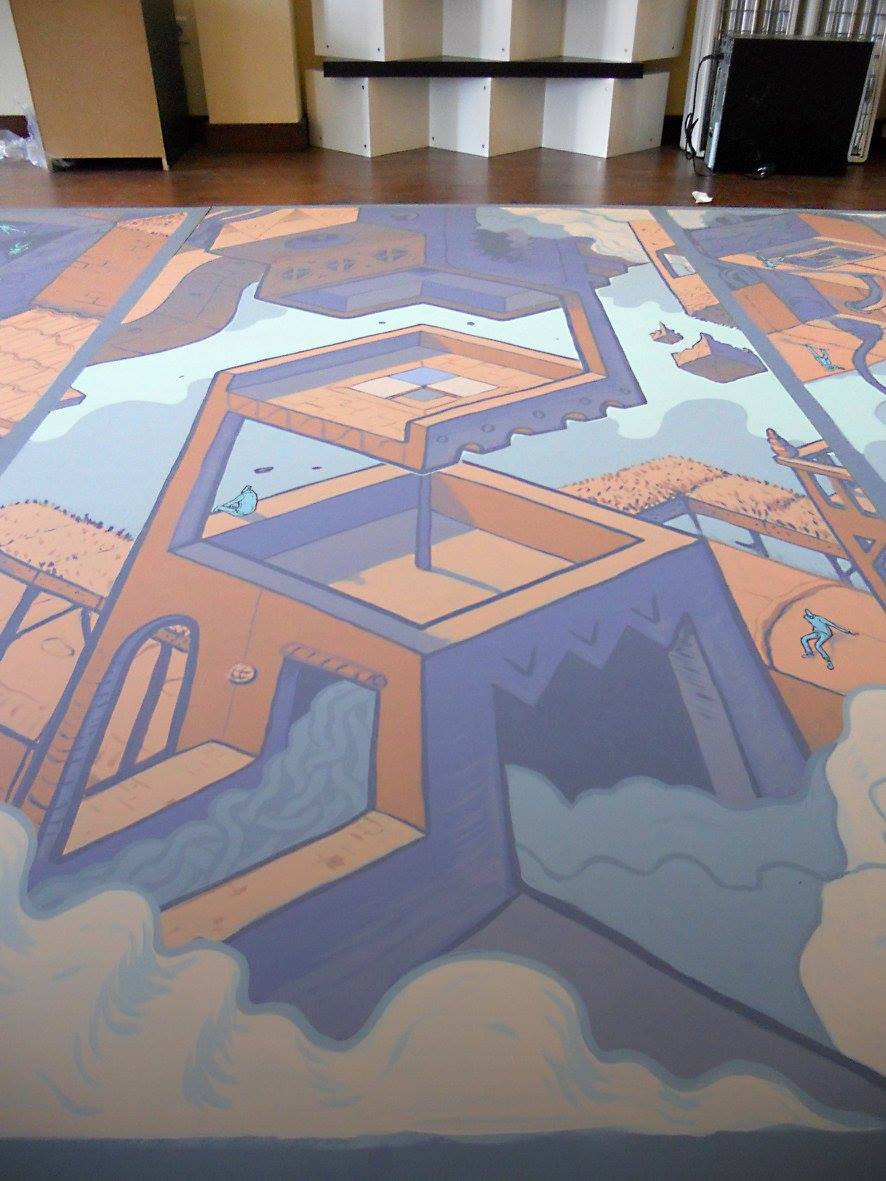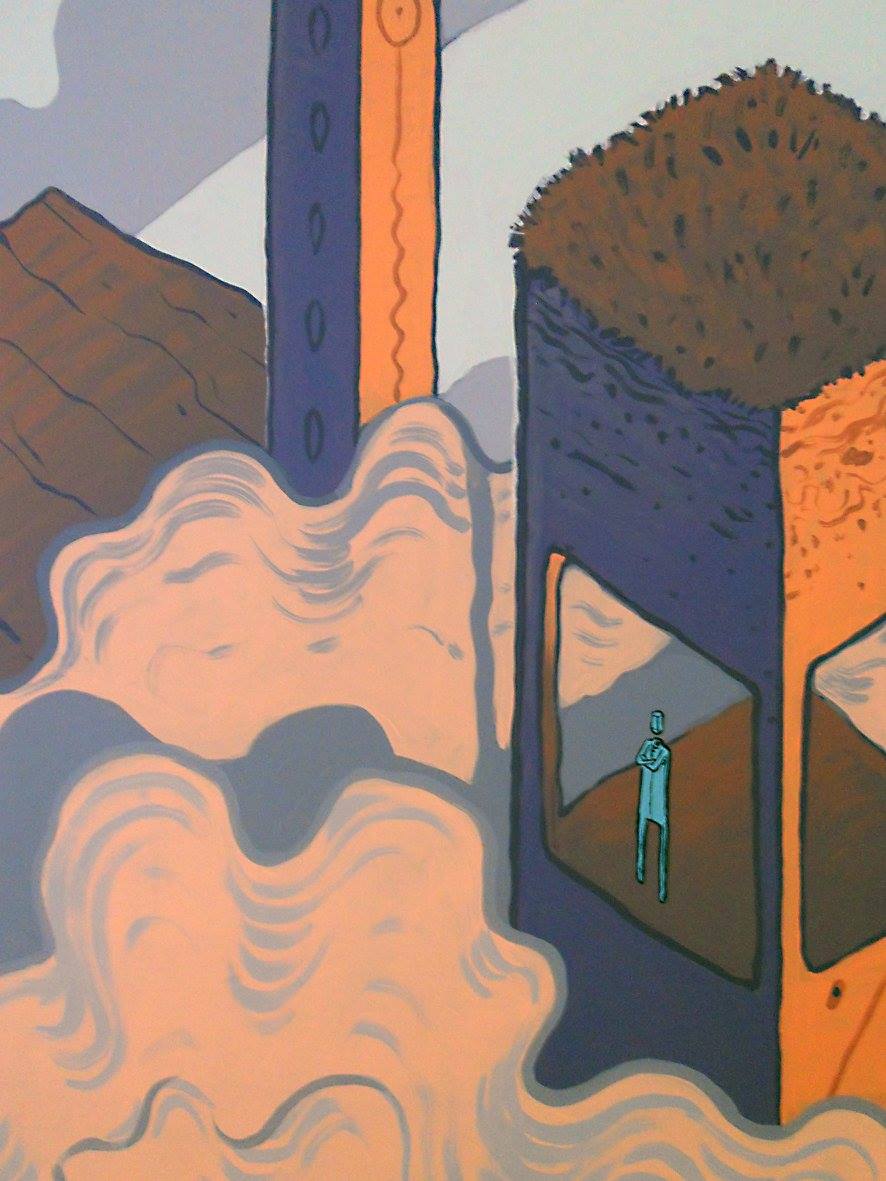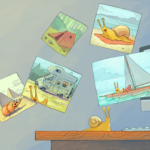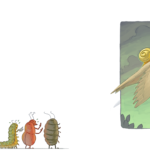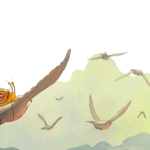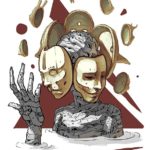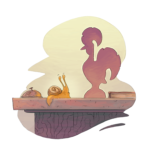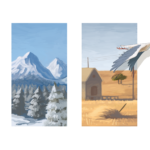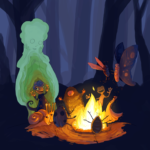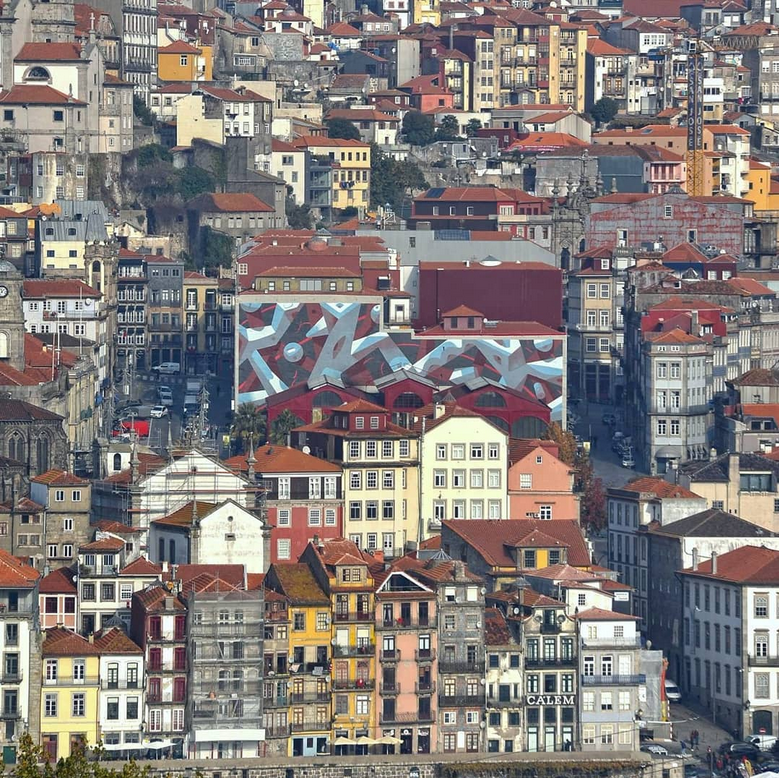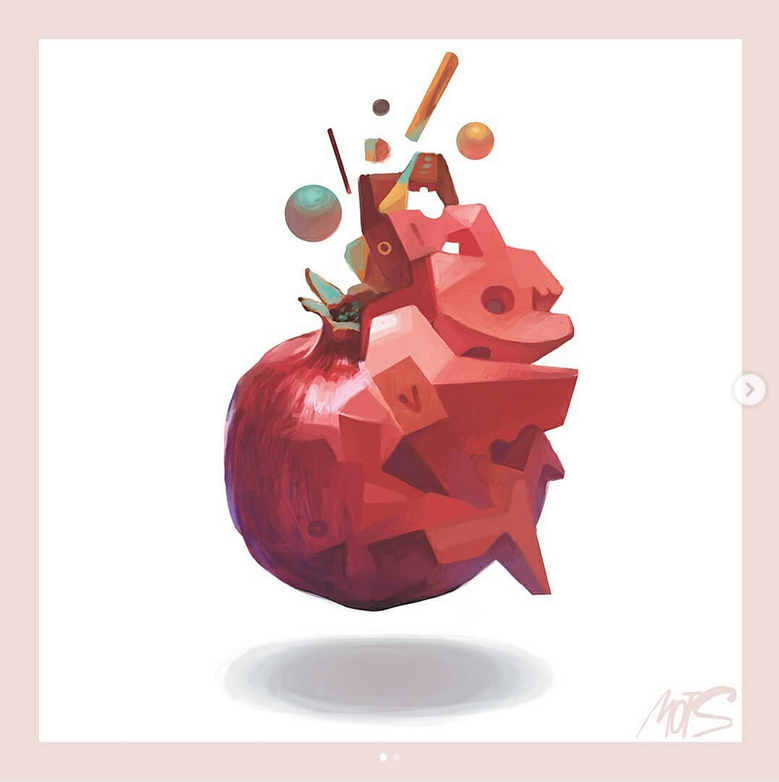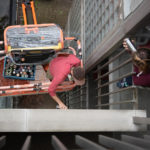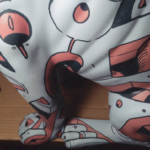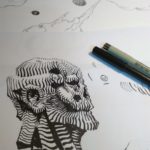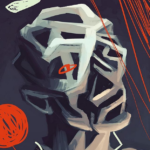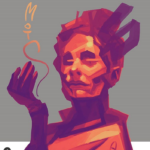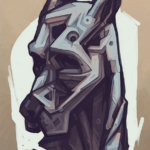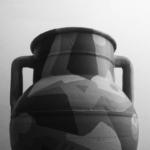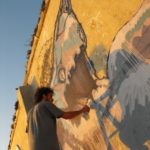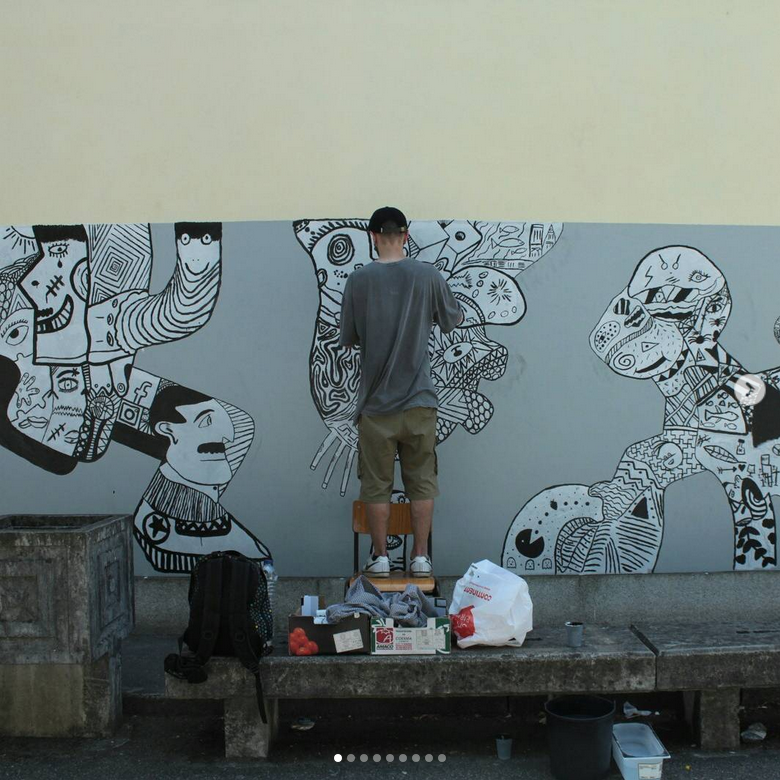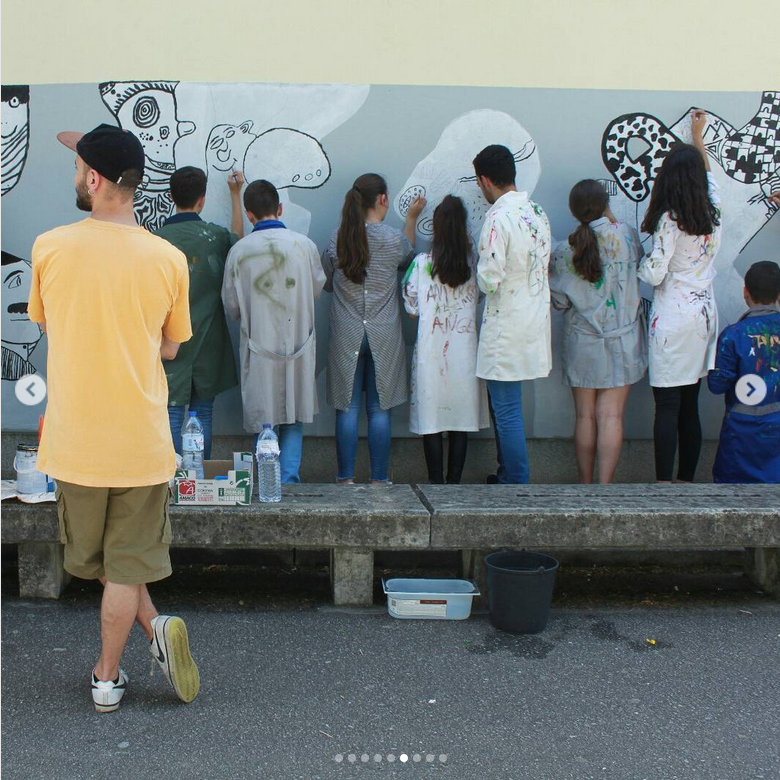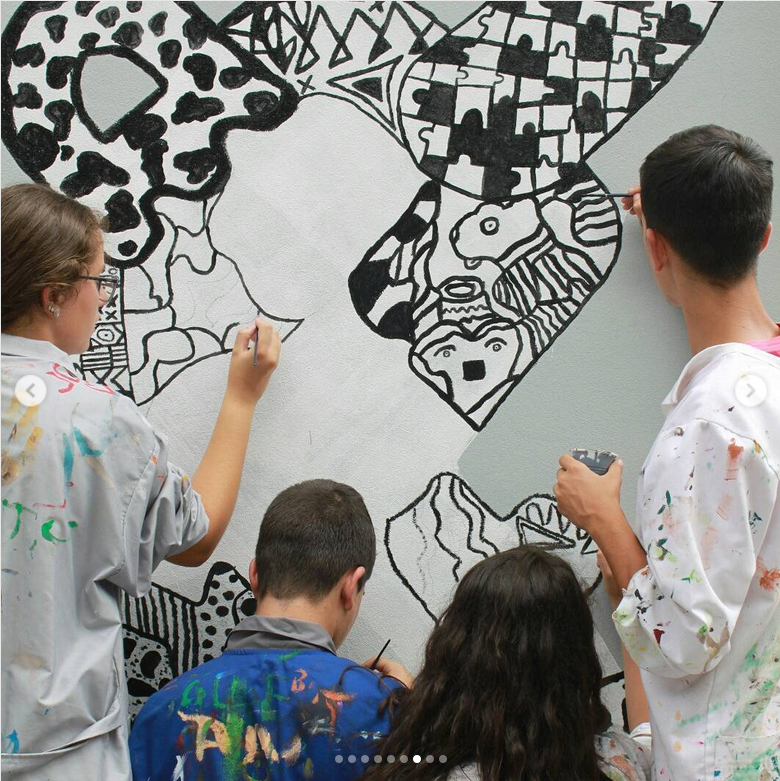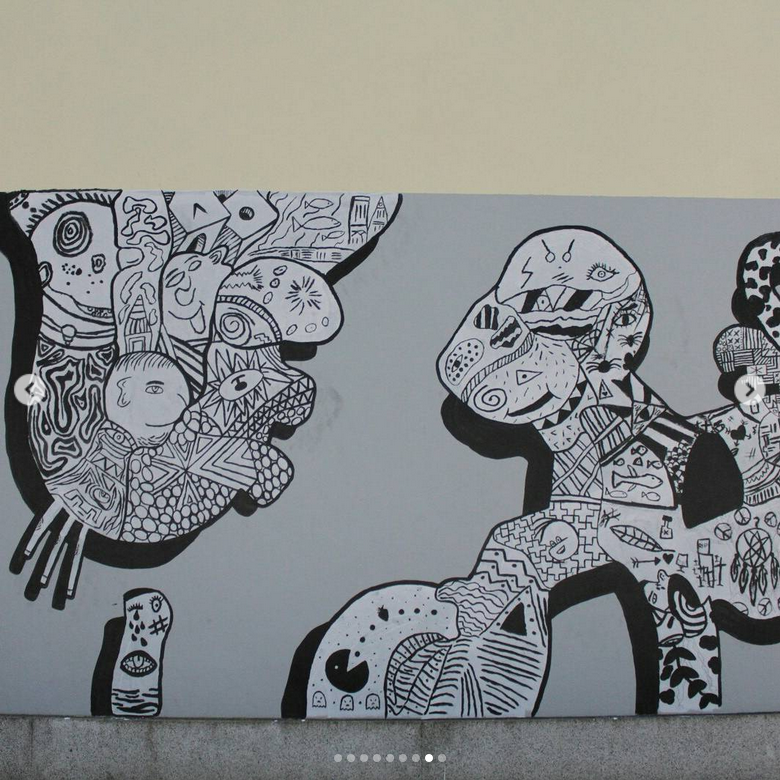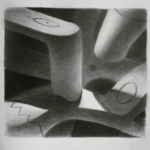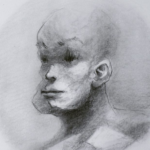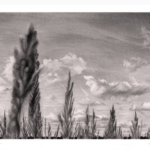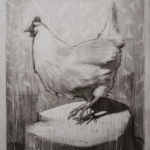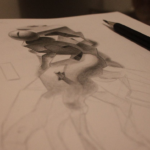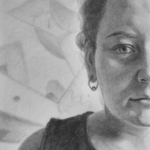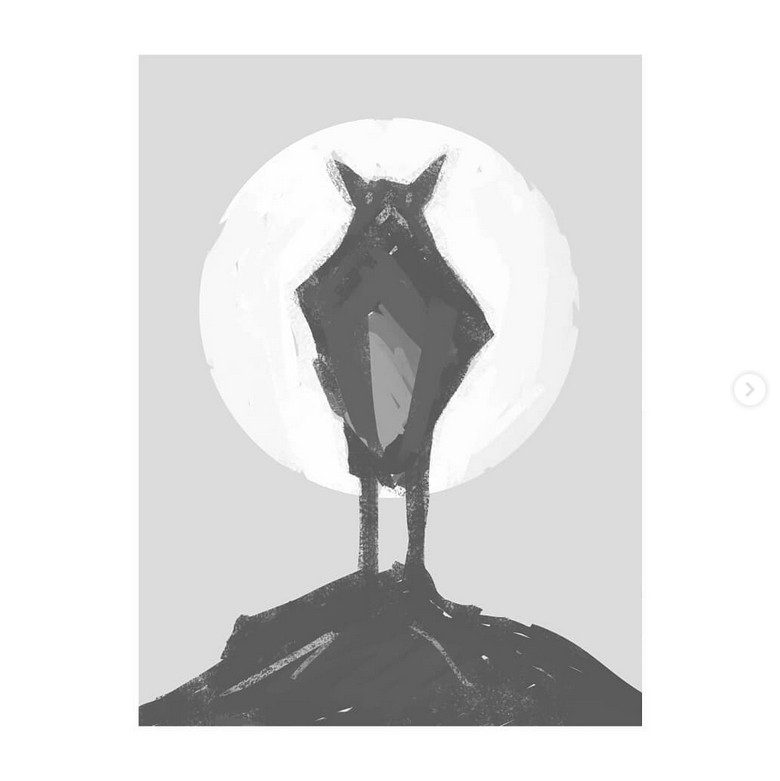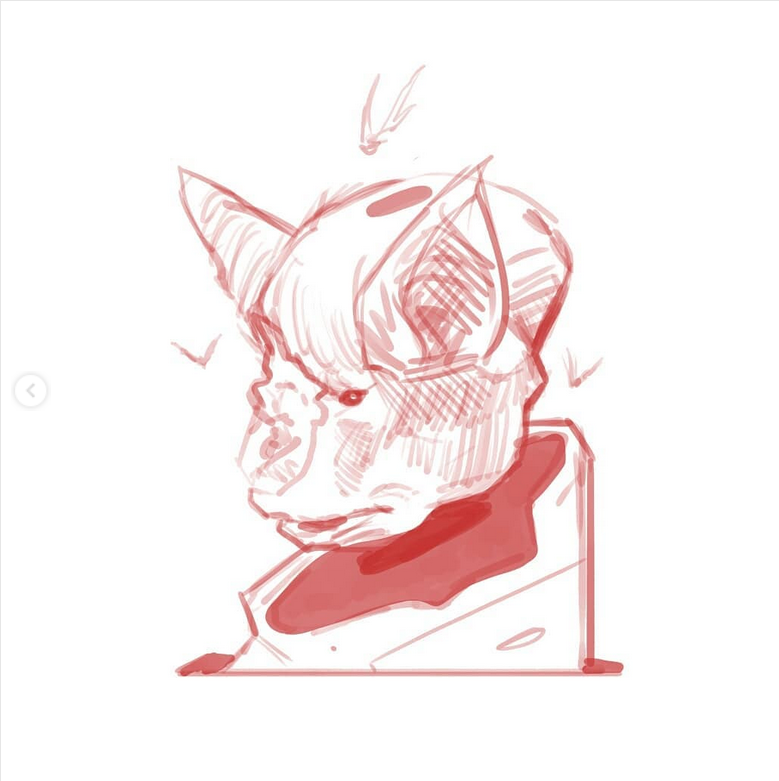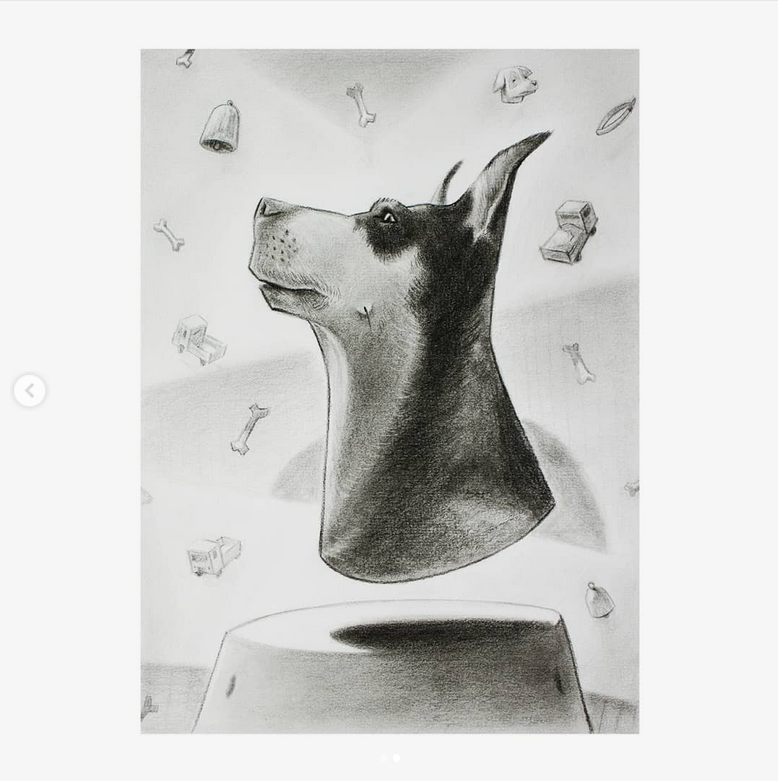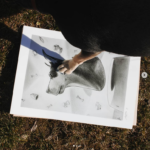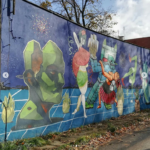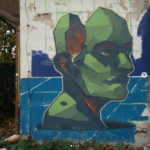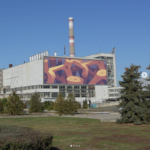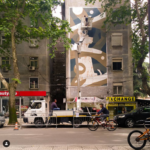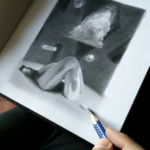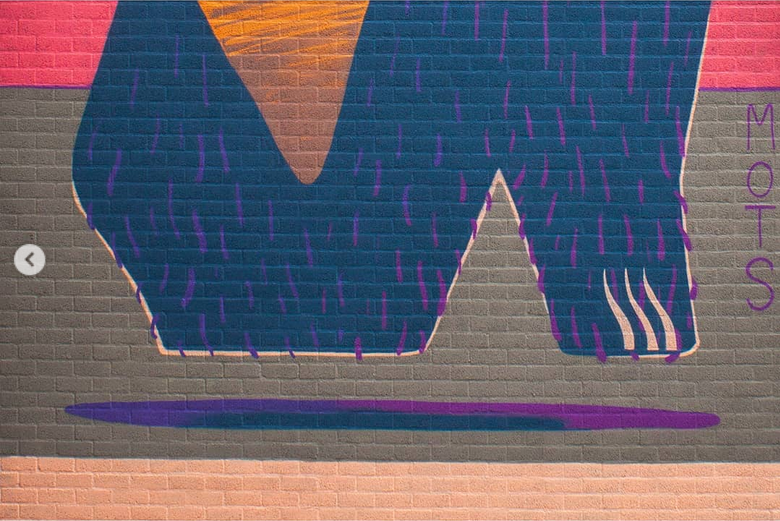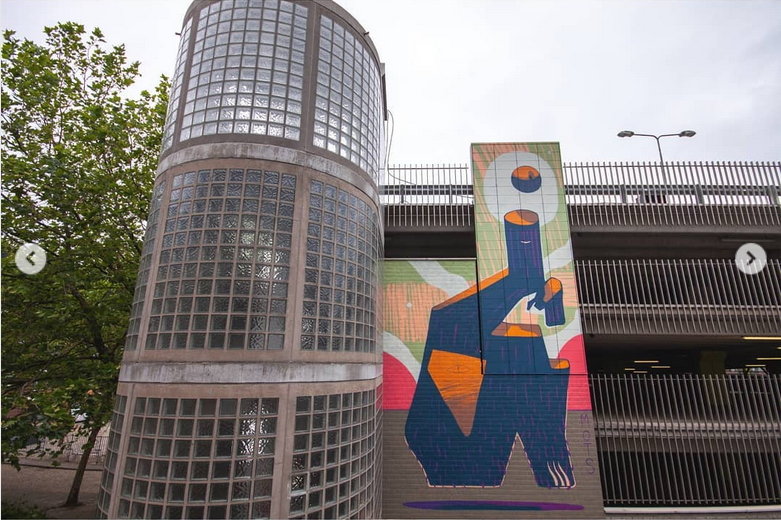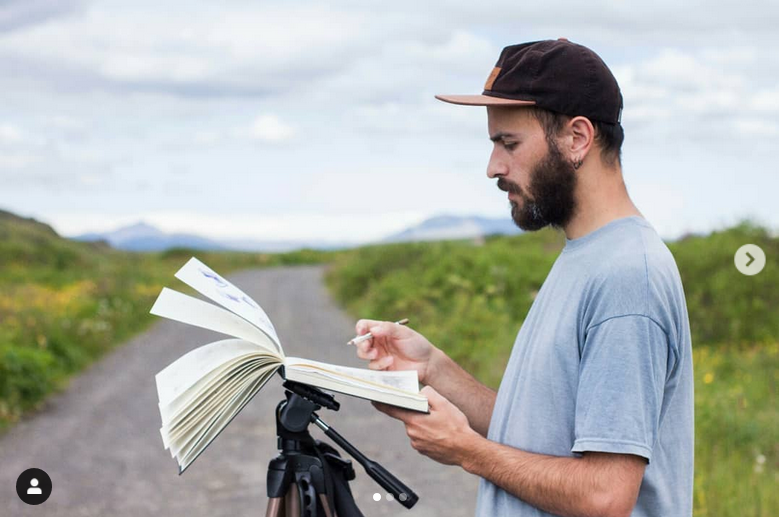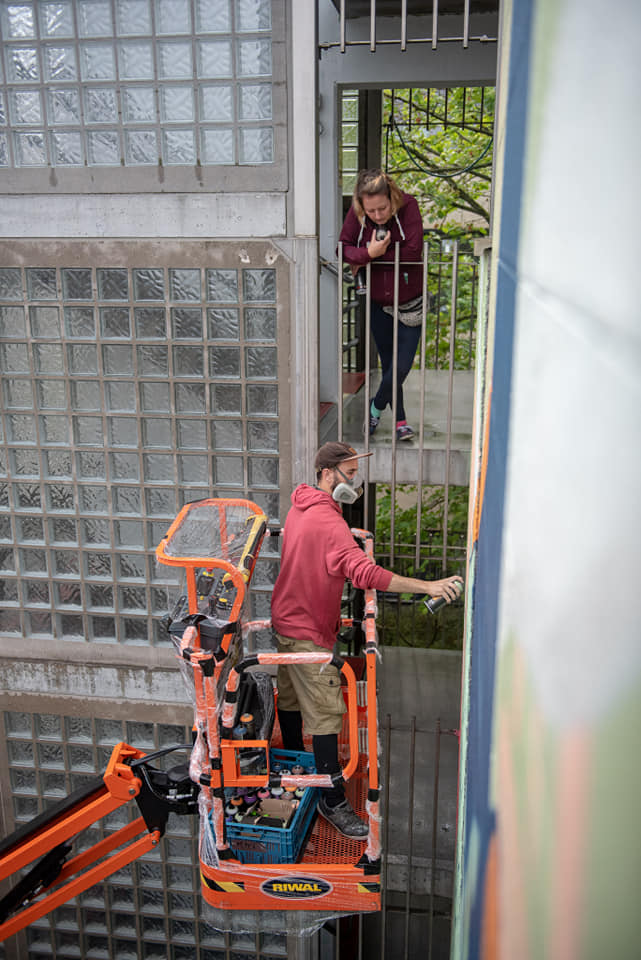Diogo is a graffiti artist from Portugal, Jagoda is originally from Poland. Together they are MOTS and this creative duet is travelling through the countries while leaving awesome and attention drawing artworks in the urban landscapes. They are specialized in making huge murals but love as well to do their colorful remodeling of walls at abandoned places or where it just seems to be needed.

Their wonderful paintings develop in a combination of own imaginative creativity and all the surrounding impulses and influences they encounter in the several areas they go. Sometimes it can be based on a deeply colorful and schematic theme connected to the local architecture and nature, in other situations they get sensitized by social issues and problematics which can become the topic of the next mural.
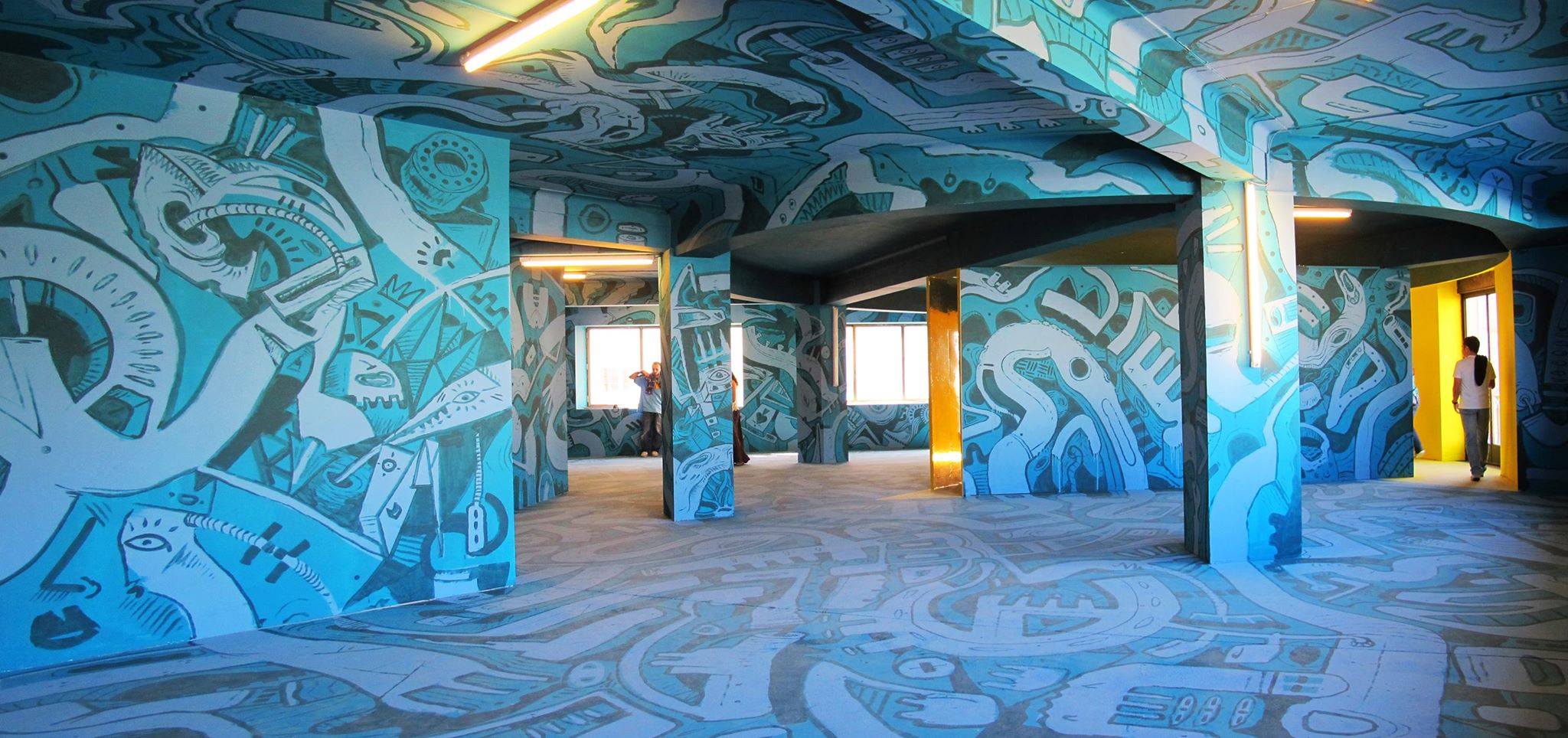
Diogo looks back on a long history of graffiti writing and mural spray can art. In Portugal he was part of the MANIAKS crew. Jagoda works in several art projects, one is an art foundation called Fundacja Manowce Kultury, another is the Prowincja magazine about artists. In 2017 they found each other and now they became MOTS. Together they invent the concept of their works, they paint together as well. But Diogo is the graffiti based stylist and does the sketching. He is famous for his dismantling and remodeled geometrical structure techniques which you can find throughout the paintings. Jagoda is as well specialized in the organization and public relation parts. The teamwork fits together perfectly.

In Priština MOTS recently painted the Open Cage Mural to get more awareness about the situation of the bears in Kosovo and Albania. The majestic animals are kept in small cages for attraction to restaurant visitors at several still existing places there. The conditions for the animals are horrible. Meanwhile there are new laws which prohibit this imprisonment and near Priština the NGO Four Paws opened a sanctuary for the traumatized bears. At the moment they have 16 animals which are mentally completely broken but are recovering. The Open Cage Mural is Jagoda´s and Diogo´s call for action to animal rights and their expression of gratitude to the sanctuary and all the people who take care of animals´ welfare in general.
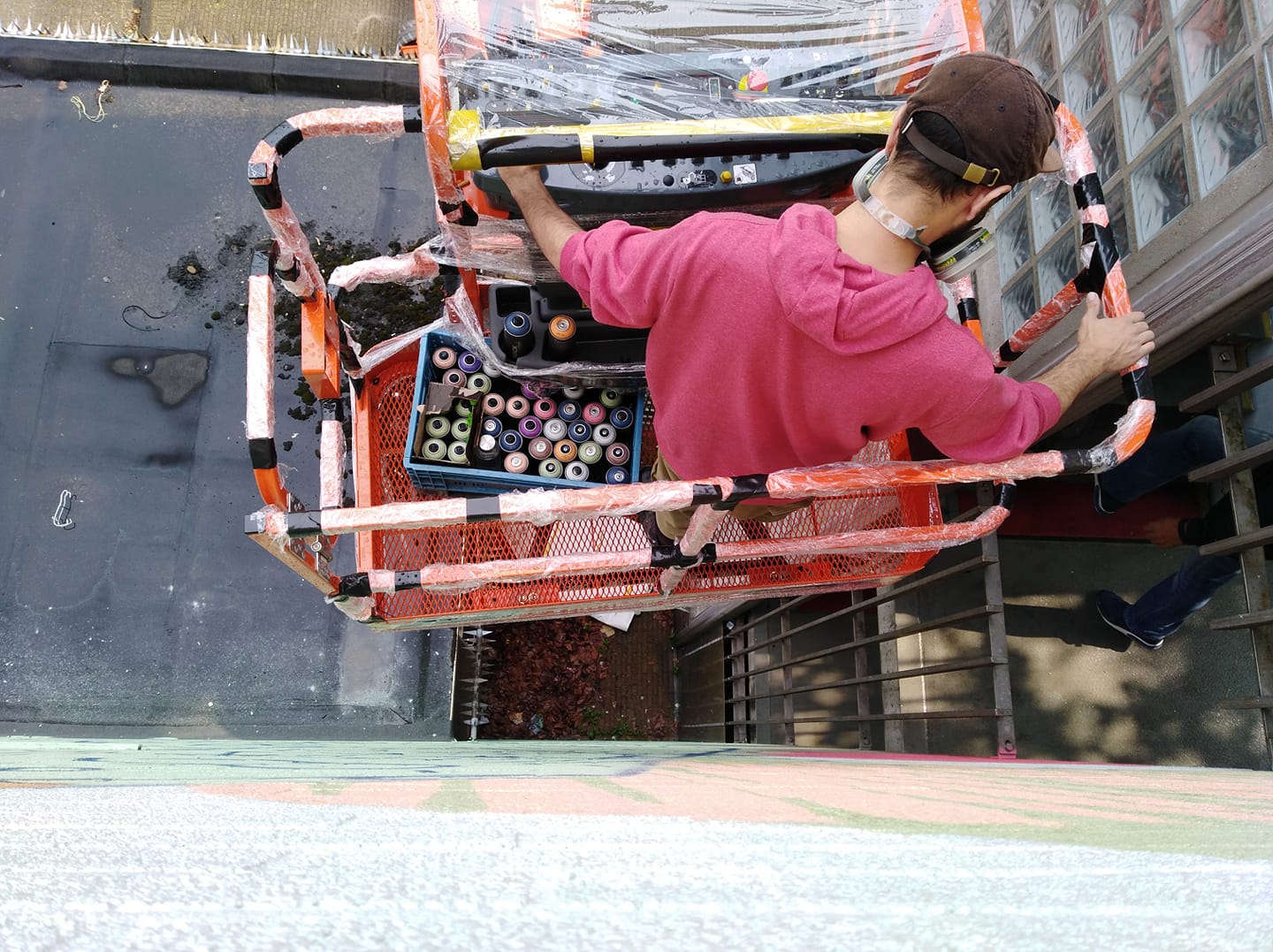
In an interview the two artists spoke about their artworks, their development and the difficulties in this sector. Listen to the podcast below, as well there is the written down conversation in the following part.
You are two artists from two different countries, Portugal and Poland, you both have your different styles, but together you work as a graffiti team called MOTS.
DIOGO: Yes. Well, we both have different tasks. Jagoda doesn’t have a background of graffiti and murals from before. But she started to work on it with me since 2017. Because with MOTS it was just me in the beginning and I kind of opened MOTS to work together with Jagoda. So I´ve been working previously more in murals. Not that much only with MOTS, I was working as well in a collective before called MANIAKS. So the works of MOTS are kind of old projects but renewed now and it´s me and her, so Diogo and Jagoda working together.
JAGODA: Yes, and we are sharing the duties, the project is a little bit divided, because for all the creation part, for all the drawing and the sketching Diogo is responsible. We are working together on a concept. We are working together on the themes. I am also painting with Diogo. But for the main creation part Diogo is responsible. I have a little bit different draw than Diogo has, but we are working somehow together and in the end it works cool.

But you are becoming one now. So with the whole MOTS project it was actually your beginning.
JAGODA: Yes, yes. I started painting with Diogo. So as I said the creation part is Diogo´s part and I paint during the execution of the project. The murals I do as well, but all the details and all the precise stuff that you can see that is Diogo´s part. We work together for the ideas, like for the concepts and I am also responsible for the coordination part. More the bureaucracy stuff and also the documentation part. I take the photos. I am not a professional painter as Diogo is. Actually I started to work together with Diogo in 2017 and the first time we painted it was a wall near the harbor in Porto in Portugal. So it was my beginning with walls.
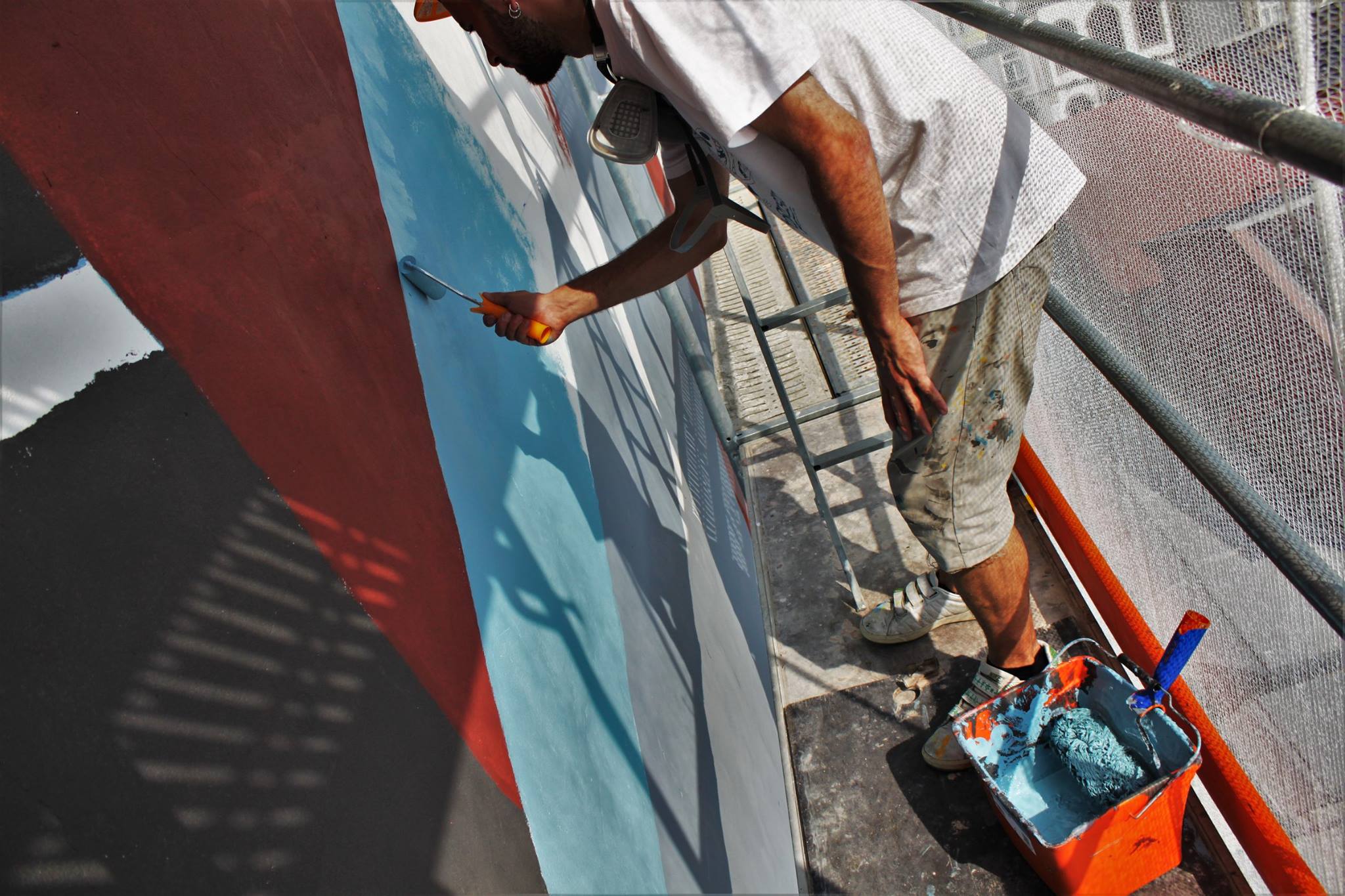
You Diogo you have been doing graffiti since a longer time. Tell me a bit about it.
DIOGO: Yes. When I started I did not jump directly to graffiti. Before I was drawing a lot. I am also born in an artistic family. My Mum was an art teacher; my Dad was and is a designer. So I came with a little background also from an imaginative and creative world. But then since around 2000 I started to be super interested in graffiti. I began to do a lot of graffiti during that time. And I started to do of course a lot of illegal stuff in those days. In Portugal it was really not accepted at all by then. Even though today it’s still not completely accepted but at least the murals are somehow. Of course, it is graffiti. I think it will never be something super accepted, because of its connection with vandalism and all that is around it. But it changed a lot.
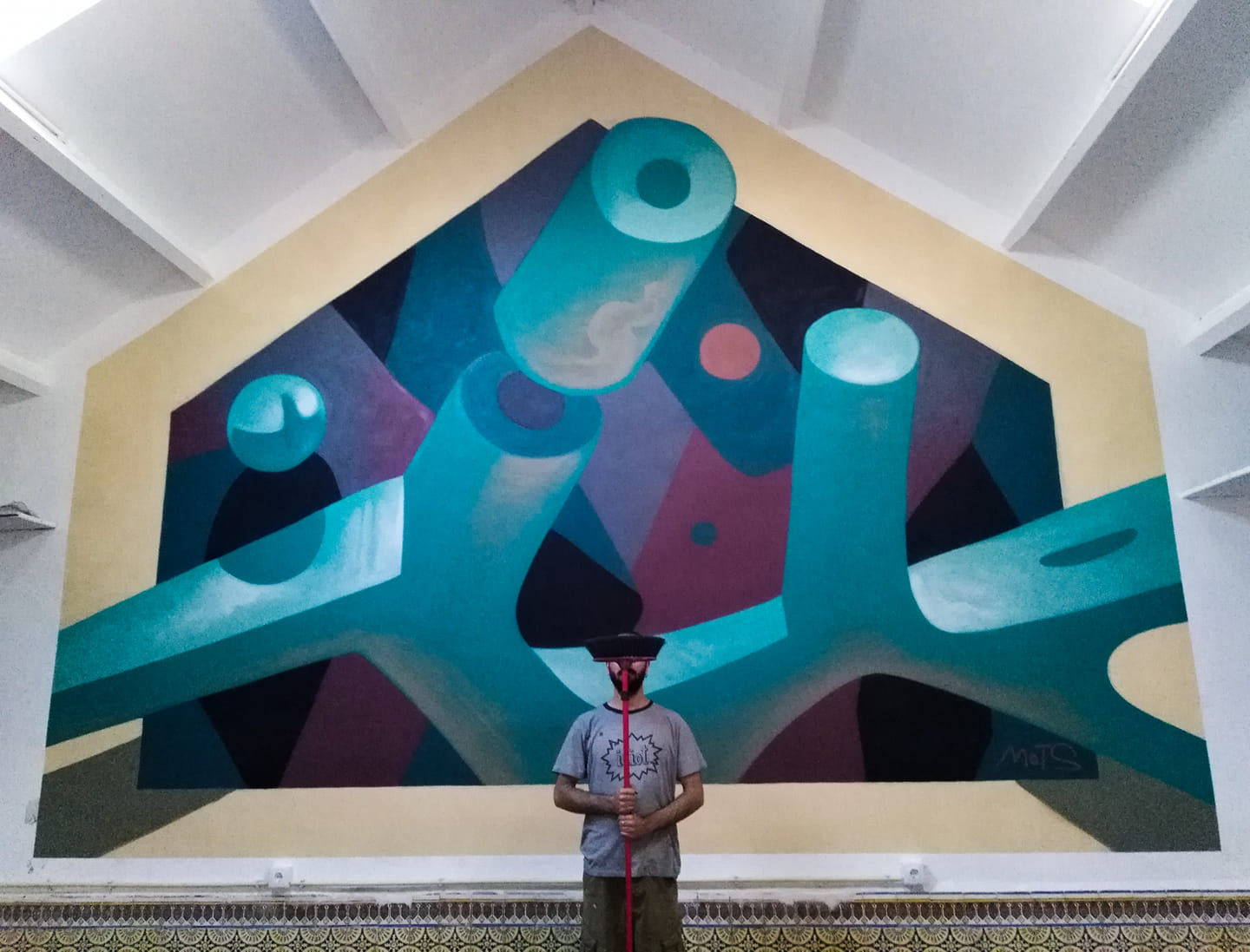
There will be always a part of graffiti and streetart which just never even wants to be accepted. It´s part of the soul of the whole phenomenon and there are the different parts and sides, one part will always and has always to stay in the underground. But altogether it´s the art on the street.
DIOGO: Yes, exactly. We share the same space with different intentions many times. Yes, that´s true.
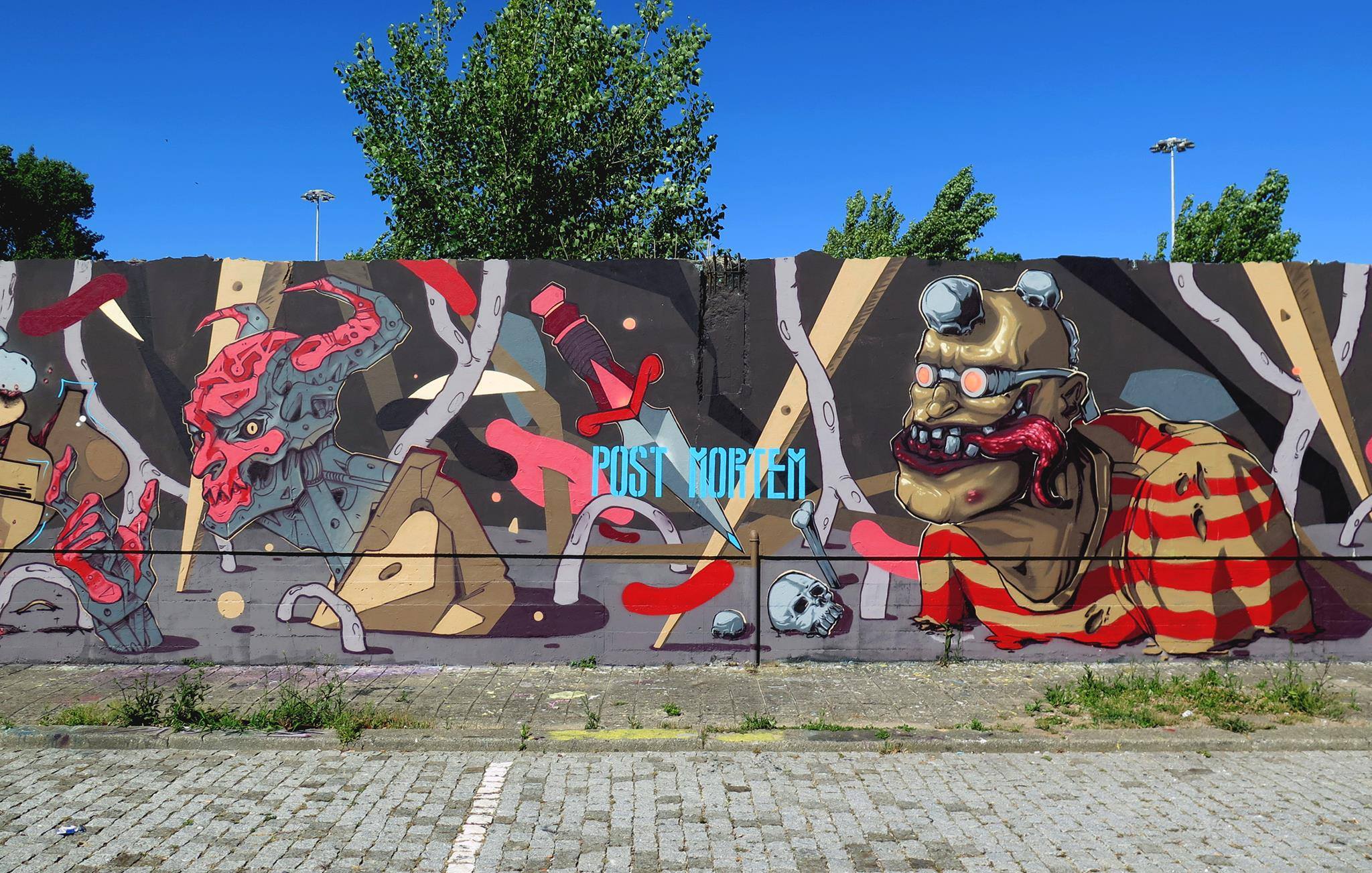
Diogo, you started with MOTS or did you use other names?
DIOGO: Well, it was MOTS for most of the time. I started of course with different tags in the beginning because I was also searching myself and trying to find the good combination of letters. Graffiti is a lot about lettering, at least in the beginning and in the start it was. So then I came up with MOTS because it was the perfect combination for me in terms of the street name and also the tag and the combination of letters. But then of course it started to have other meanings after I met this collective that I started to work with. There are two other artists from Porto, the one is FEDOR. Now he works with another collective, but we had MANIAKS. The second one was NITRO. So it was me and those two and we did MANIAKS for almost eleven years. We focused our work a lot on having one language, that MANIAKS would be also just one person. It´s similar with MOTS. Because me and Jagoda are working together, but we try not to show us as two. We try to show our work as one. And we had the same with MANIAKS before through all those years. So I never worked too much in a solo project. I only did in 2014 more work alone and I focused more on my style. Which was good, because I started to explore my ideas and my imaginative world. And then in 2017 I met Jagoda and we started to work together. Because at that time I also was a lot in need of someone who could give a boost to my projects because when we artists are in the creative process sometimes we forget about all the other aspects that are important to express ourselves to the others in different fields. I am not super skilled in social media and all those platforms. And Jagoda brought that entire boost to it.

The artwork you do together you started as well to put messages into it to give people awareness about issues.
JAGODA: Yes, we started to work like Diogo previously also worked. Like with the context always. Whatever it would be, like if it would be the urban landscape and color schemes around or if it would be like a social context about local social issues. This was always very important. All the urban artworks, they work with an effect and for me it is very valuable that they are situated at places with respecting the discus and the context of it. That´s the reason why sometimes when we are at some place and there is some case which is touching for us, or important or sensible, that´s why we are trying to bring it into our artwork. Sometimes it´s a theme like the last one in Priština when we used the bear as a theme from the sanctuary. Another time it was just about shapes like in Austria. There we painted some simply abstract themes but it was related with the shapes and colors that we have found around and it´s more about the esthetics. We try to find a balance which is situated in the place where we are working. There are some things which are very important for us and sometimes when we were in a place where the issue is very visible we wanted to bring it up and highlight it and to put awareness on it. As well we try to do this through our esthetics and our language. It´s not always the activist topic. It´s a kind of balance and it depends on the place, as well on the situation and how we want to communicate what we would like to talk and draw about.
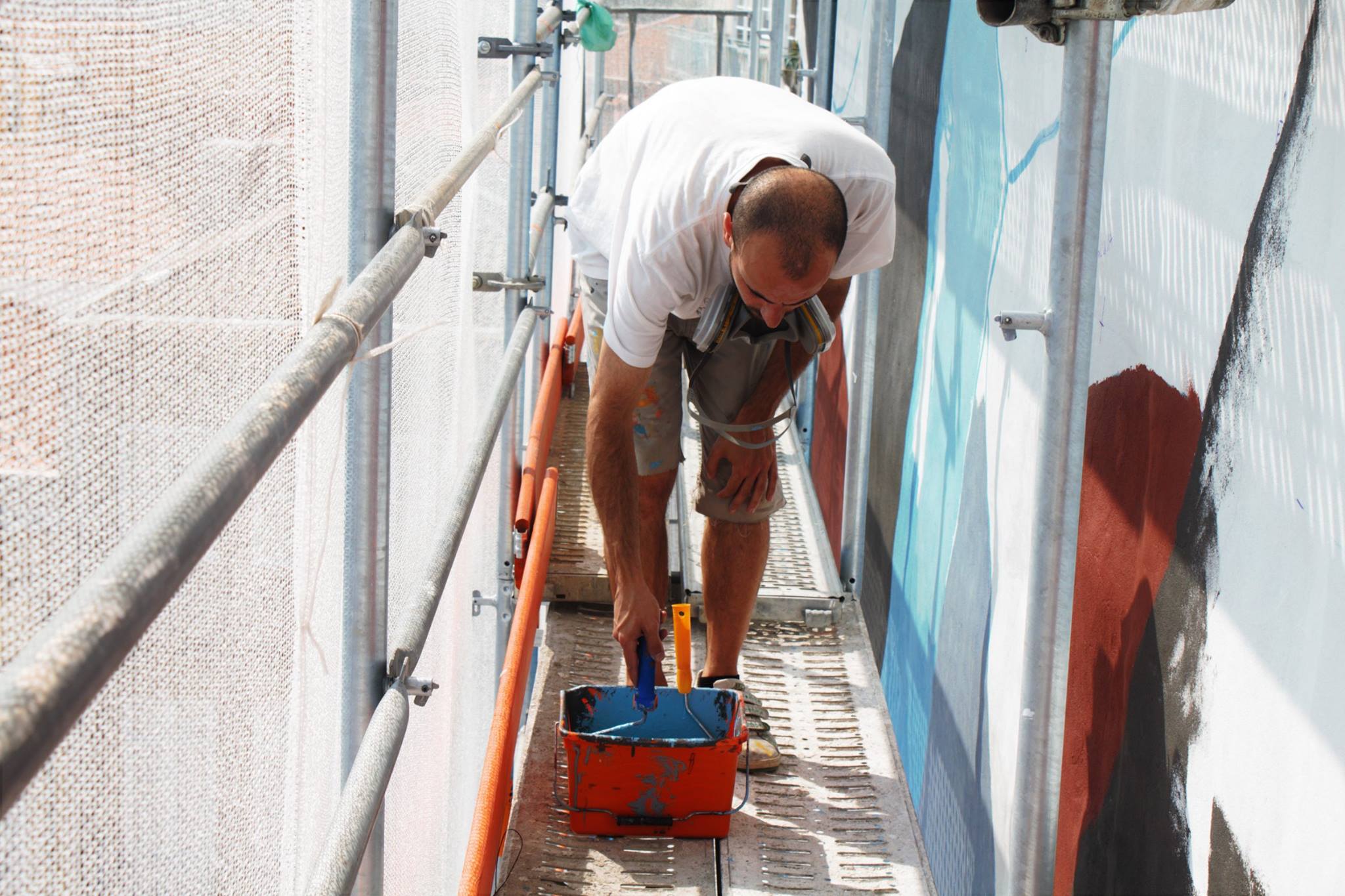
Tell me about the Open Cage Mural and the situation in Kosovo with the bears. How did you encounter this issue?
JAGODA: Actually it was in Albania when we heard about it. This year we have been in Tirana at the Mural Festival and there we have heard for the first time about the bears. And I think in Tirana there are still some. The bears are used as entertainment for the costumers of the restaurant, so they are locked in cages and therefore they are called “Restaurant Bears”. You can find them very often in the restaurants and there have been a lot nearby where you could find them as attractions. So people would come and take photos with them, give them some shitty food, throw stuff on them and they even gave a lot of the bears some beer to drink. The conditions at the restaurants were really bad and crappy. This we have heard the first time in Tirana when we were doing a mural about the Stray Dogs and again when we went to the Meeting of Styles in Kosovo. There I started to do more research about this topic and I realized that near Priština there is a very beautiful big sanctuary for those Restaurant Bears. I don´t know how the laws are in Albania, because I heard there are still restaurants with bears, but in Kosovo it´s official forbidden to keep them in the cages. I think in 2010 if I am not wrong they banned it and made a law that it is illegal. By then there was this institution, this NGO called Four Paws which decided together with the government of Kosovo to set up this sanctuary for the bears. So there is the sanctuary and there are around 16 bears at the moment. The area is very close to natural conditions and it´s a very beautiful and awesome place. It looks really savage and they have all the necessary facilities there. There are also some Albanian bears. So in short this is the background and because we were attached by the stories about this. We heard personal stories and visited the sanctuary.
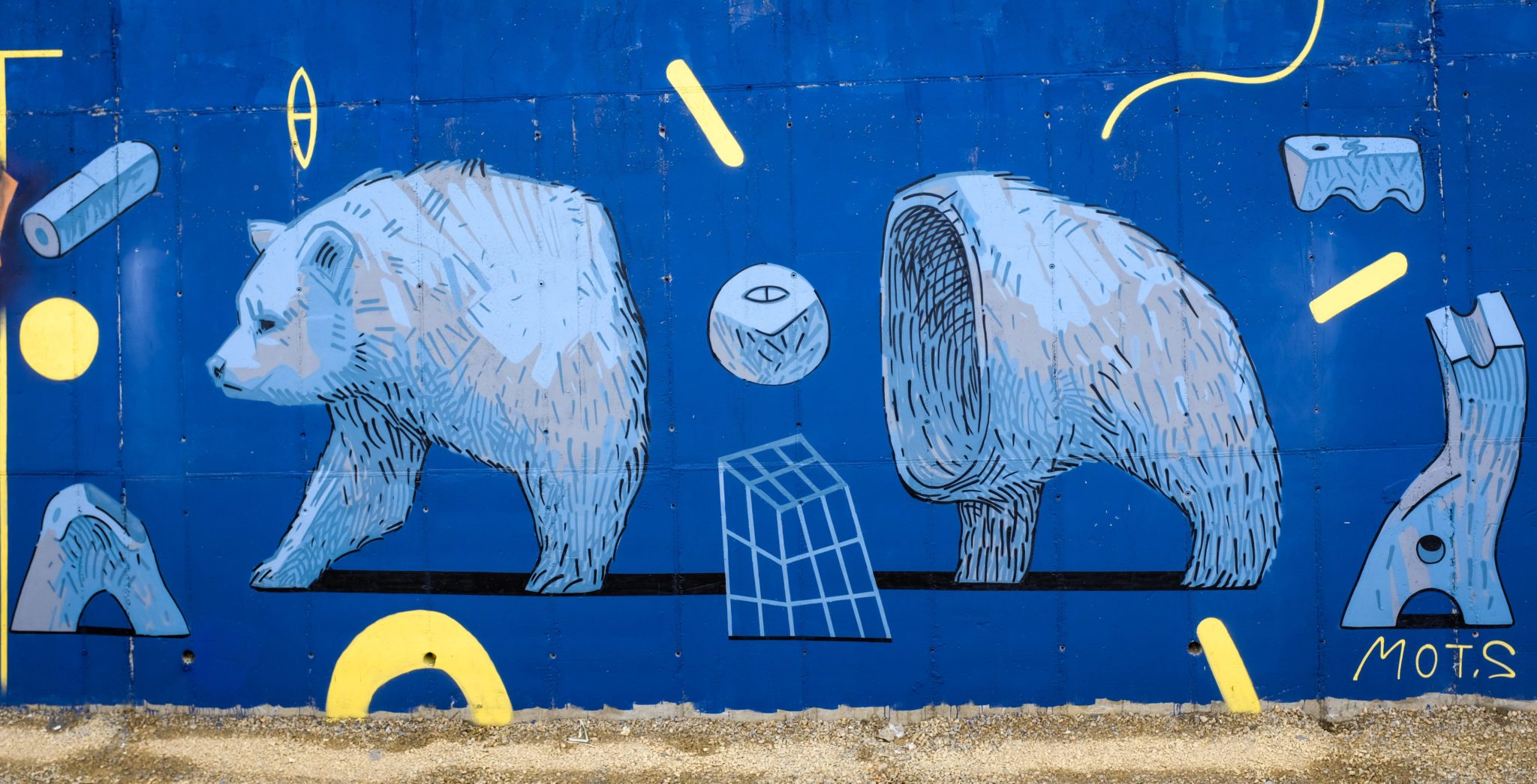
DIOGO: Yes, we visited the sanctuary and we have seen a lot of these bears. They were traumatized. You could see them walking in loops like when they don´t go out from the same place. They are moving like back and forward, like the animals sometimes in a zoo.
JAGODA: Yes, even if they have been in good condition, they were mentally broken. Completely. I don´t have so much knowledge about their psychology, but those animals, you could see that they were mentally broken. We have been reading as well a lot about it. So it is like a rehabilitation center for the bears and they can live there their last days. And because of their mental trauma and those broken creatures, this was the reason why we decided to paint a broken up bear.
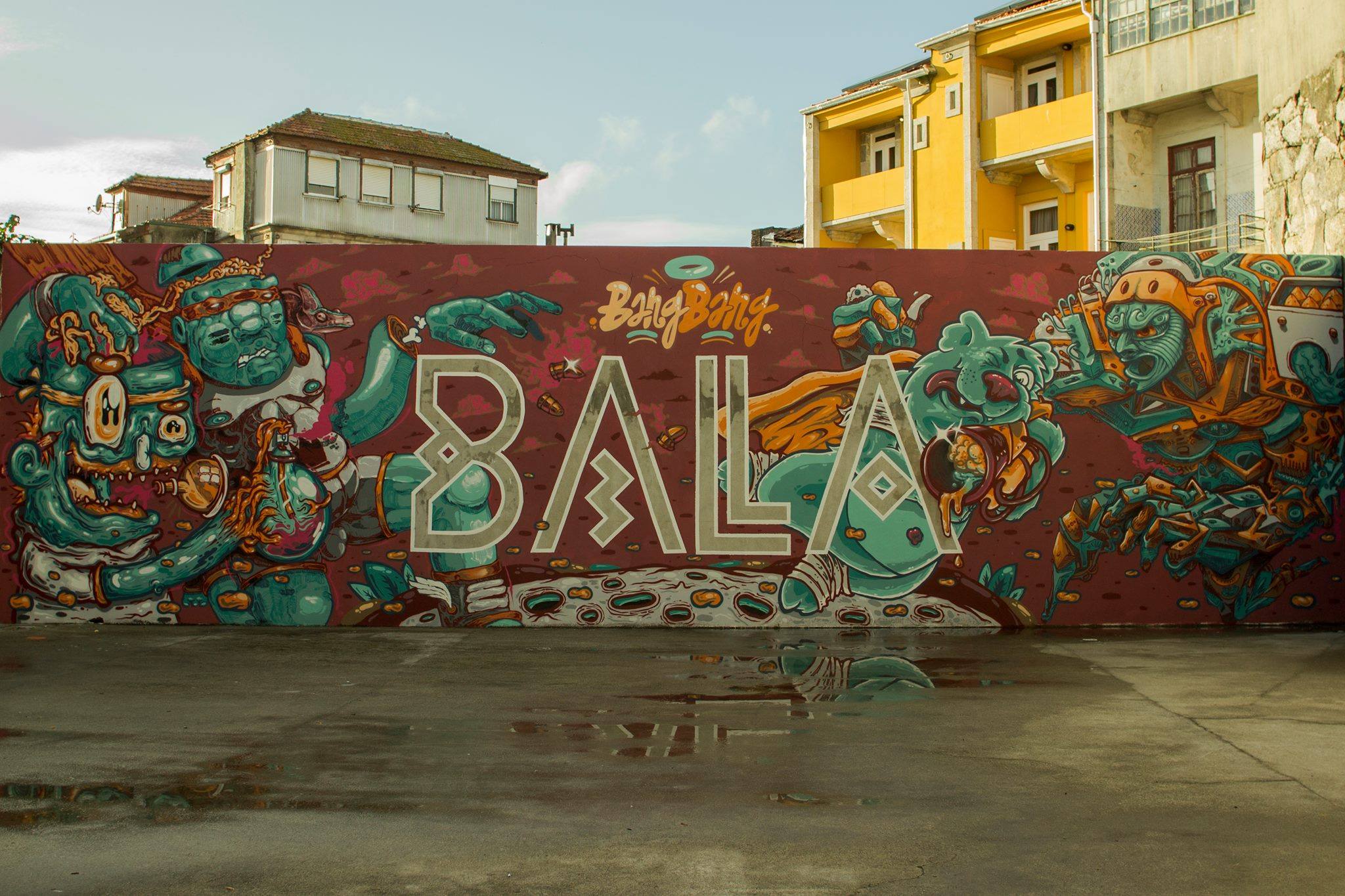
You painted this mural to put more attention on the issue, and you said there are laws now, but is it still a problem? Do they still have them at some places?
JAGODA: What I have heard is that it is still in Albania happening, but in Kosovo not. But we wanted to do it there and as well we wanted to highlight the animal rights in general. Because this is just one example of the imprisonment of animals. And the other reason is about the gratitude for the people of the sanctuary. They do something. They put a lot of effort in it and do voluntary work for the welfare of the animals. I find it totally crap what people are able to do with other beings. So for me and as well for Diogo, those topics are very sensible and touching and I think we should be all equal. Those kinds of topics might appear more in our works but it´s like I said, this is one of the works that happened in this context because we have been in the Balkans and it was what we have encountered. Next time it will be maybe just some colors and the shapes. But this time it was something that really touched us. We were talking a lot about this and then we decided to pick this topic.
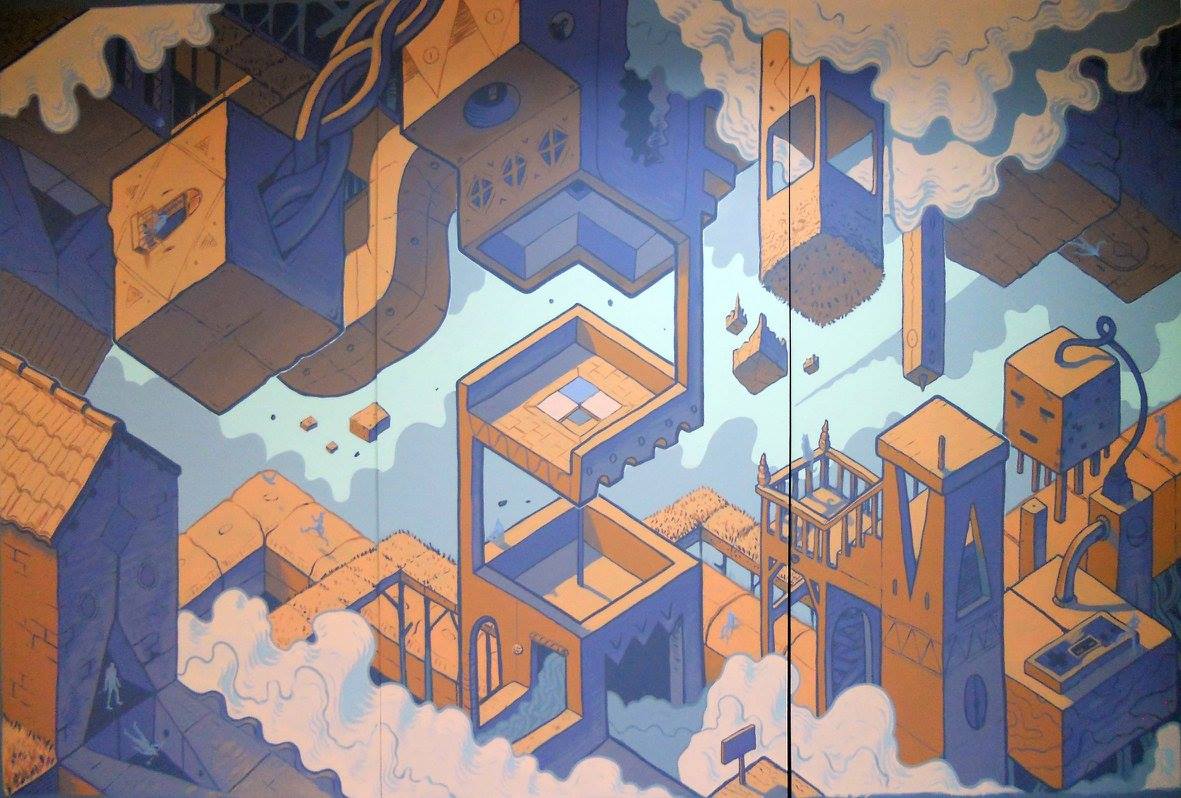
What are the next projects?
DIOGO: Right now we are planning to go to a festival called IBUG. It´s very interesting. The festival is in Germany and the organizers of the IBUG are picking every year some abandoned space. Always a different one. They picked this time some old train station. A place where they fix and build the trains. It´s a huge abandoned station, we love as well abandoned places. So it was awesome that we got invited and can participate in this project. We still don´t know exactly how it is going to be and what we are going to paint there. It´s a little bit spontaneous. Also it´s an ongoing work in progress they are doing there because they needed to recover all the place to hold now this exhibition and this event. We are super curious and very motivated to participate. And we have a huge wall to paint. And the organizers are doing a very great job there. The previous events have been really cool. We didn´t have an opportunity to visit any other edition yet, but we are happy that we are going this year.

Do you only use spray cans or do you use as well other painting materials? What are the ingredients of your work?
DIOGO: We work a lot with both of them. With spray cans and with acrylic paint as well and with other paint. We mix most of the time, but I try nowadays more just with the acrylic paint. Because for many years working only with spray cans it became a little bit too toxic. So yes, I prefer it a bit in a mix. It´s as well more comfortable with acrylic and also the result and the colors. I like a lot to mix my own colors and with the spray cans it´s not so easy. You have a color chart and you have to follow the colors that are available. And the different companies they have different charts. We are a little bit more independent when we can mix our own colors and have our own pallets. That´s something that I prefer and also the results I like. But I also like the mixture and I am super used to work with spray cans as well.

I have here your Instagram account and I am looking on the paintings and the artworks. There is surely a similarity in all of them. You have some which are very into graphic design and with graphical structures. Sometimes you have just the colors but then the structures are going into an animal like a butterfly or a dog. Could you say it is some kind of a combination of graphical and biological themes? The dog looks like built with little graphic blocks.
DIOGO: Yes, it´s very geometrical, that´s true. Because I like a lot to dismantle the organic shapes and forms into their most basic shapes. I like to work with that and I search where the light and shadow works the best in these shapes. And then I jump from that to creating a resembled figure of this animal or the butterfly like you mentioned. So I try to work that way. Because I always like this dismantling of the images. The shapes, even how easily simple they can be sometimes, they can also still communicate to us what we are naturally accustomed to see in our natural world. I like to play with that.

I think the butterfly is a very good example, as well the muscles of the dogs. It looks like you have “graffitisized” the animals. Like you draw the butterfly normally with shapes and then you made it three-dimensional but how you would make it with graffiti letters. So you made the same with the muscles of the dog and you painted the structure of the butterfly like the whole butterfly would be a graffiti letter.
DIOGO: Yes, you got it. Definitely. I still have a lot from what I was doing from graffiti. It is still on all the compositions I do. Definitely.
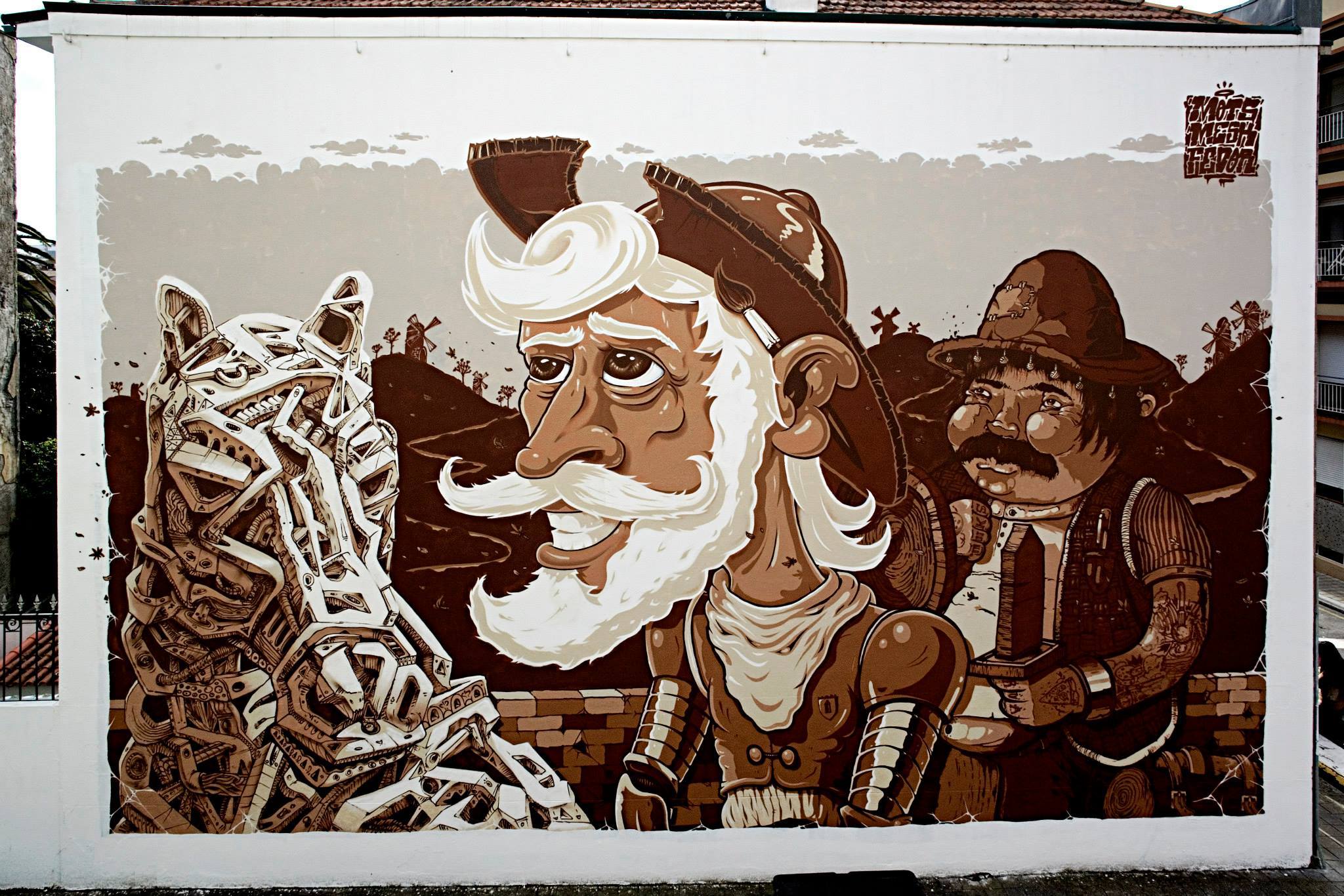
The dog looks if it would be without fur and just with the muscle structures, even a bit like a cyborg dog.
DIOGO: Yes, yes. A lot of people think I mainly do robots because of that. Because of the block shapes and the geometrical forms. They tend to go a little bit to that direction of mechanical thematic. And yes, I also like it.
JAGODA: Yes, Diogo likes monsters and robots. And I like monsters and robots as well. I like it how Diogo works sometimes. It´s a random process which I find very interesting. When he starts from the random shape, like really random, like from a splash, from the shades or the blocks, which he randomly drew, he can just create a full project without any beginning of the idea. He makes a full poster or a full character or something that he in the beginning would never say it would be like that in the end. This kind of process of creating is very interesting. Some time ago Diogo had a project with water colors. He was making a splash and it was a random splash. And from this splash he started various dimensional creatures and objects. And he was adding the details and it started really from nothing. Not from nothing but from just some spots.
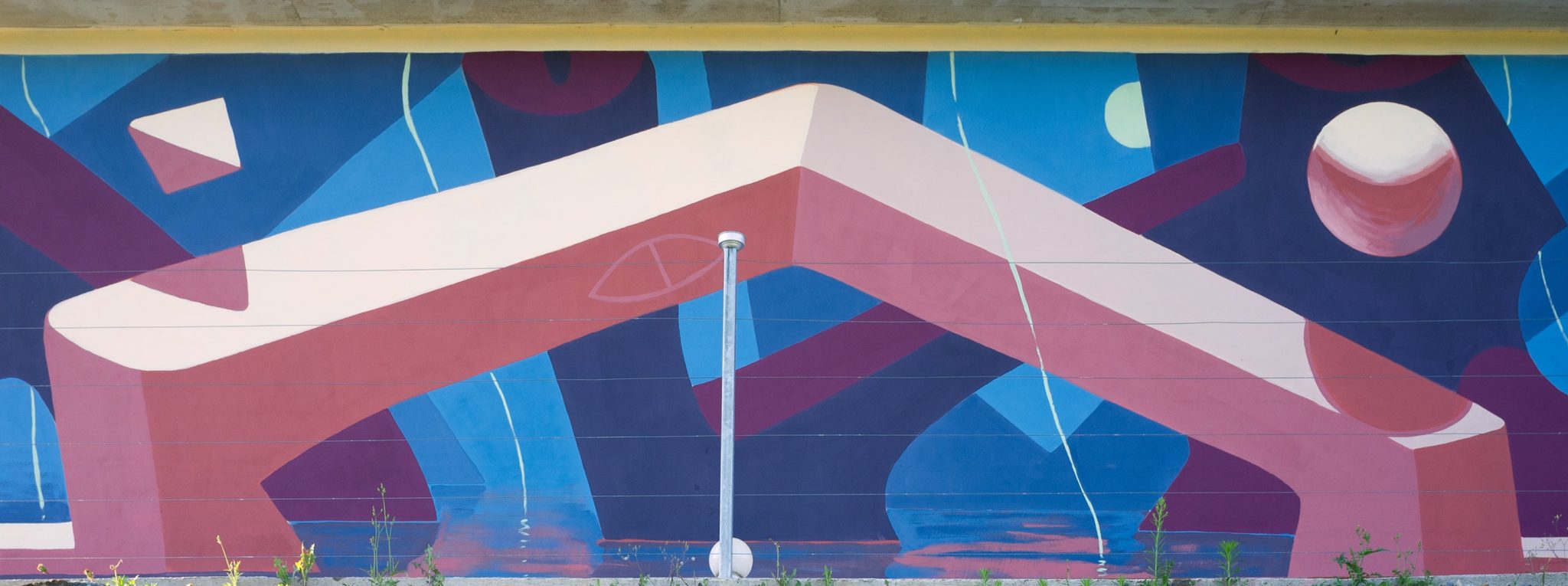
DIOGO: Yes, or some shape. It´s a little bit like with the clouds. They always resemble something to our minds. We always remember something or see some animal or some face because we are visually trained to always recognize patterns. And I explored this also a lot in the creative process. I like to start completely random. Or if I don´t start completely random I like to dismantle the figure so that it won´t be the figure anymore. And then I start to build it again to give it another aesthetic. The collective I had and I was telling about, we worked a lot like that. We were just painting random circles and a lot conditioned by the rollers and stuff like this. Completely random. And then we were stopping, looking at it and seeing the shapes and each one of us was going to the wall and we gave the shapes filling. Like what you see, a car or an animal or an object and you just go and paint. We were a little bit creating our walls like that before.
JAGODA: It´s very cool and it wakes up the imagination as well. We also do something like this with my nephew. Of course on a different level. But with him on a piece of paper we make some shapes and then he has to continue the shapes. Then you are folding the paper and you pass it to another person to continue as well. And then there is something as a painted result in the end. Whatever it is, it is always some imagination with cars or animals and so on. It´s very cool. In general those games and this way of creating are very interesting and I find it very appealing.

In your gallery you have for example the apple, this one artwork is quite small. But next to this photo there is the very huge one which you can see from far away in the city skyline. It´s a very huge mural on a whole building. What was the biggest mural you did and how difficult is it to make it that size?
DIOGO: The biggest right now was in Porto and it was actually the first work I did together with Jagoda when we started working together
JAGODA: It was the first wall I painted and I really thought I would die there.
DIOGO: Yes, it was a heavy start. The size of the wall was more or less half a kilometer square. It was quite challenging because I had to work without any distance from the wall. I was on a scaffold and I had no opportunity to step back and to look at the whole wall. So I had to more or less manage a way to do the sketch with the advance of knowing about this. Basically I did the typical grid on the whole wall. I did a huge grid on it. Like each square had two meters by two meters. And it was like a puzzle. I was working on each square a little bit during the project and the process was very long. I was not used to this. Because like I said before I was working a lot with this spontaneous and random shapes. This is more careful and more thinking about the process before. And then you just do the execution. There is much more process work before and then it is just printing basically. You just go to the wall and execute. It was challenging, yeah. The process was different, but I enjoyed it as well because sometimes I do things like this with the grid. Mostly when I have no distance to the wall and I cannot step back to have an overall visualization of the wall. So I am a little bit used to this technique. But it was also the challenge to deal with these dimensions and as well to provide the wall. Because this wall was really in the center of the city and it is really really visible from the other side of the river in Porto. So I had to be super careful with the picking of the colors to be not too invasive in the city and to fuse together with the landscape of the place.
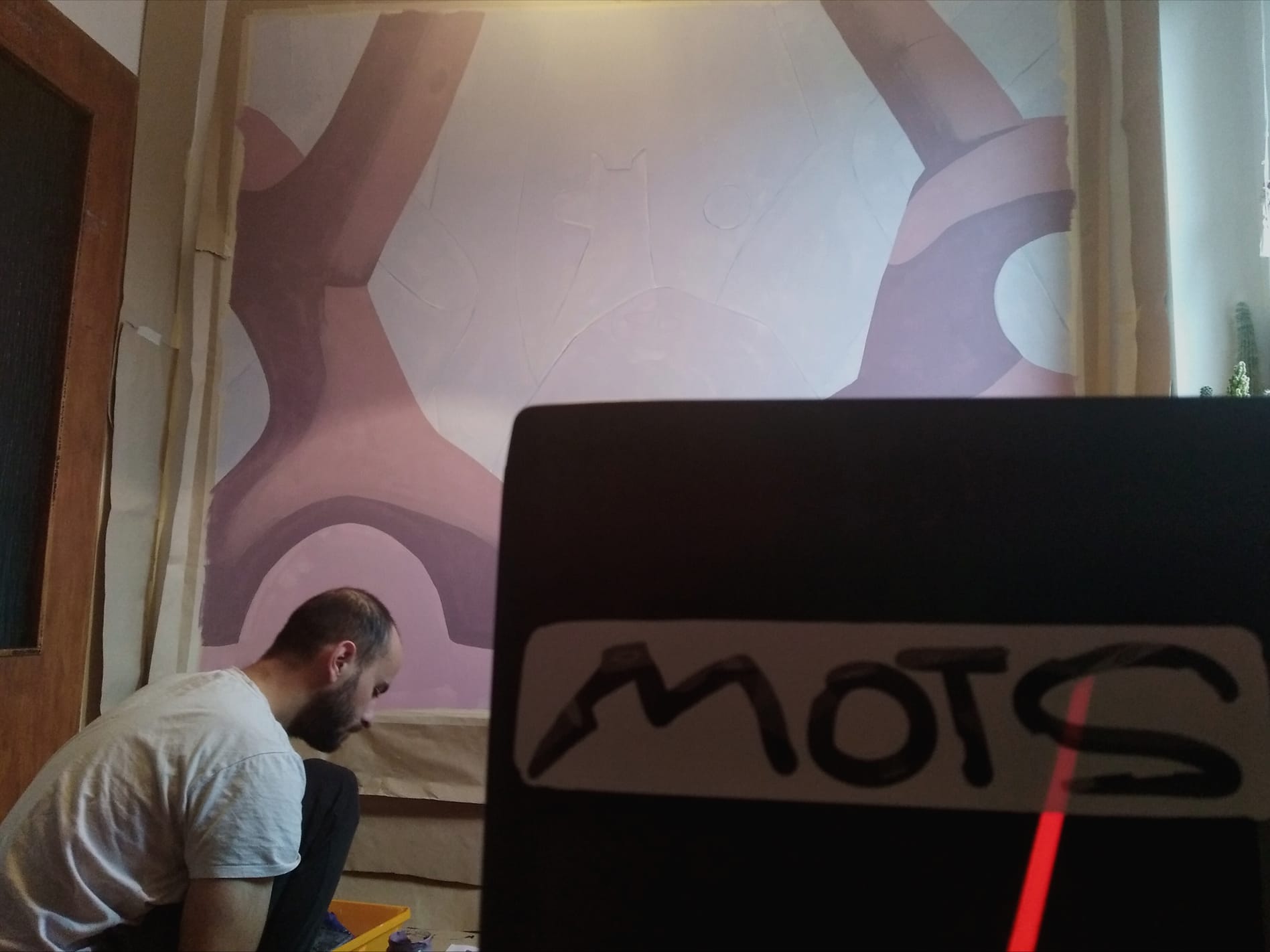
JAGODA: Yes, because this is as well the old town and there is this iconic landscape of Porto that you have on the postcard. As well with the old architecture. So we were afraid and wanted to respect all the architecture and the colors and to fit somehow in it that it works. It was as well about the tiles continuation.
DIOGO: Yes, it is an extension of the buildings there. And of course, it was so high and then with the scaffolds. Now I just remember that one of the challenges was the altitude. I am a bit okay with the altitude, but for Jagoda, it was really tough for her.
JAGODA: I was the first time on the scaffold and I don´t know, maybe on the ninth or even fourteenth floor. And there was a big space between the scaffold and the wall because the wall was not straight. It bent slightly. So when I had the space between the wall and the scaffold and I looked on the other side of the scaffold and then again on the top, the first two times I thought I would die. But then I got used to it and it was fine. But I was still not able to go on the top because everything was shaking and I said no. I am not going to paint on top. Just on the previous floors but not on the last one. Because everything was moving and I don´t know if it was that safe.

We said before it´s all part of the streetart. You have the tags, the bombings, the graffiti or the murals. But with the development of the urban art the murals are the ones which brought it more into the city by affecting more acceptances by the people. Because most people only think graffiti is just vandalism on their door. They cannot divide between small tagging and the bigger works. Maybe they realize there are some faces and some letters, but I met so many people who have seen a mural like this for the first time and they said: “Wow, this is good, but this is something different”. Actually it is all part of the same, it´s all about color in the urban landscape and since there are more and more murals I think people started to look and think differently about how their surroundings can be covered. Since you started painting, how is your experience about all this and the peoples´ opinions about streetart and graffiti.
DIOGO: Definitely in the beginning I came towards not so much acceptance about the murals. Because we were doing a lot illegally. But we did murals, we were not just doing graffiti. We did murals back then. It was always a mix of fifty-fifty percent. People were coming and have been very glad for what we are doing. And we had then some people who thought we are those guys who go and tag and make their lettering everywhere. Like the murals that is part of graffiti as well. But they did not see the whole thing. Nowadays it is completely different because it´s much more present. There are mural events happening right now everywhere. There is much more consciousness about this and about how they can bring more dynamic to a city or a town. Or as well to a no-place which can now with a mural be some place that it wasn´t before. I think murals brought this. They brought more characteristic and more description to these places where you are just passing by. They are now not just passing by places anymore. This is good.
JAGODA: I think it´s changing a lot and also I think the city and company developers also see some potential in it as a tourist thing. So it is getting a bit tricky. It has two sides. This is a part I don´t like, because I wouldn´t like to be a part of the bad side.
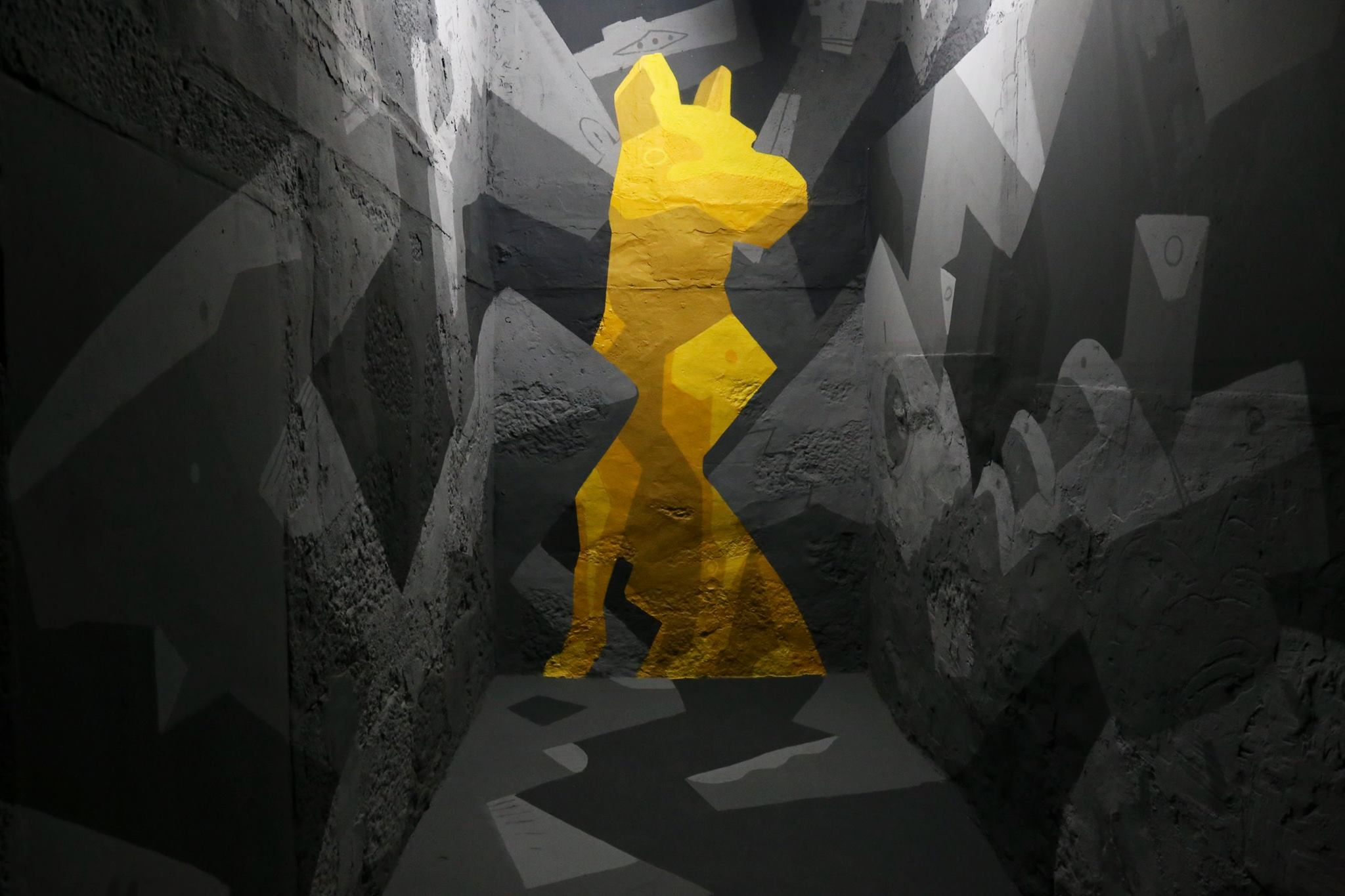
Yes, the commercialization of it. When it is in the underground, nobody likes it and when it gets more and more popular the people who want to make profit try to get their piece of the cake. You have to be careful not to sell your soul.
JAGODA: Yes, this is tricky. A lot. It´s good when you are painting something in a place where you see that there is a need of the color. Or the locals, they have the need of it and it is organized by the locals, that´s awesome then. That is super cool. But when you see that there is some gentrification and you are taking part in some gentrification process then it starts to be tricky. It´s not always so visible, it´s not always so clear.
DIOGO: It´s not always obvious. Many times it is inside some city program to increase tourism and stuff like this. There they see the potential in murals. It is a hard thing, because we love to paint murals and sometimes we are part of something that you maybe cannot see directly.
JAGODA: Sometimes you don´t know how the program looks like. You know that you are invited, you are painting, you talk with locals, you talk with people around and everything is fine. And then after some years you see that it was working for some causes. But maybe for some it wasn´t. So now with the tourism boom I think it´s getting just tricky.
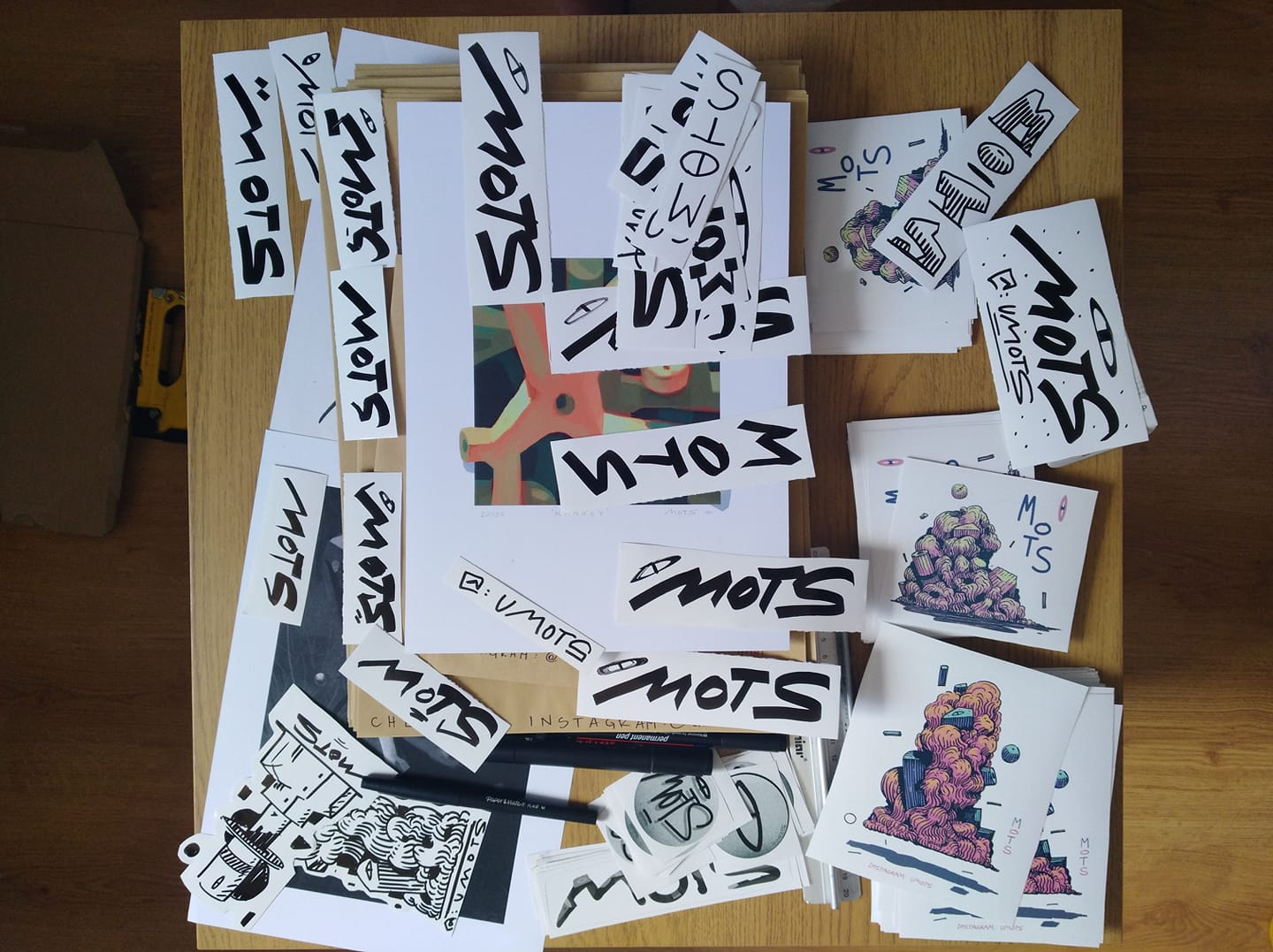
Jagoda, you mentioned as well your foundation and your online art magazine.
JAGODA: I was always somehow working with art. I finished the cultural studies and wrote my thesis about streetart in Poland and about the activism. It was a theoretical approach. And now with my friends I run a cultural foundation which is called Fundacja Manowce Kultury. And this nonprofit project provides an online culture magazine with social approach. Our goal is to promote independent projects. It´s called Prowincja. I assume the word is in most languages understandable. It means province. Because it´s something not from the center to say in short. With this we want to promote artists, as well writers, not only visual artists. They are mainly from Poland but last year we started to run it partially in English as well and we are going to do some translations. It´s one of my side projects. We want to make more languages and especially English because me and my friends who are making the magazine, we are Polish, but we don´t live in Poland at the moment. One of my friends is now in Scotland, the other one is in Belgium. I am here at the moment, but I will be in Portugal soon. That´s the reason why we decided to run it in English and also to make it more available for our friends and also for other people who are interested in it.

INFOTHEK
![]() Artist Duo: MOTS
Artist Duo: MOTS
![]() Website: https://mots.pt
Website: https://mots.pt
![]() Facebook: https://www.facebook.com/umots
Facebook: https://www.facebook.com/umots
![]() Instagram: https://www.instagram.com/mots.pt
Instagram: https://www.instagram.com/mots.pt
![]() Pinterest: https://www.pinterest.pt/umots
Pinterest: https://www.pinterest.pt/umots
![]() Big Cartel: https://umots.bigcartel.com
Big Cartel: https://umots.bigcartel.com
![]() Behance: https://www.behance.net/umots
Behance: https://www.behance.net/umots
![]() Dribble: https://dribbble.com/Mots
Dribble: https://dribbble.com/Mots
![]() Youtube: https://www.youtube.com/channel/UCe_FE79yY9knGKZL007yl3A
Youtube: https://www.youtube.com/channel/UCe_FE79yY9knGKZL007yl3A
![]() Open Cage Mural: https://vagabundler.com/kosovo/pristina-open-cage/
Open Cage Mural: https://vagabundler.com/kosovo/pristina-open-cage/
![]() Stray Dogs Mural: https://vagabundler.com/albania/streetart-map-tirana/myslym-shyri-mots/
Stray Dogs Mural: https://vagabundler.com/albania/streetart-map-tirana/myslym-shyri-mots/
![]() Prowincja Art Magazin: http://prowincja.art.pl/en
Prowincja Art Magazin: http://prowincja.art.pl/en
![]() Fundacja Manowce Kultury: http://www.manowcekultury.com
Fundacja Manowce Kultury: http://www.manowcekultury.com
![]() Ibug Festival: https://ibug-art.de/
Ibug Festival: https://ibug-art.de/
![]() Bear Sanctuary Prishtina: https://www.instagram.com/bear_sanctuary_prishtina
Bear Sanctuary Prishtina: https://www.instagram.com/bear_sanctuary_prishtina
![]() Four Paws Instagram: https://www.instagram.com/four_paws_international
Four Paws Instagram: https://www.instagram.com/four_paws_international
![]() Four Paws Linktree: https://linktr.ee/four_paws_international
Four Paws Linktree: https://linktr.ee/four_paws_international

